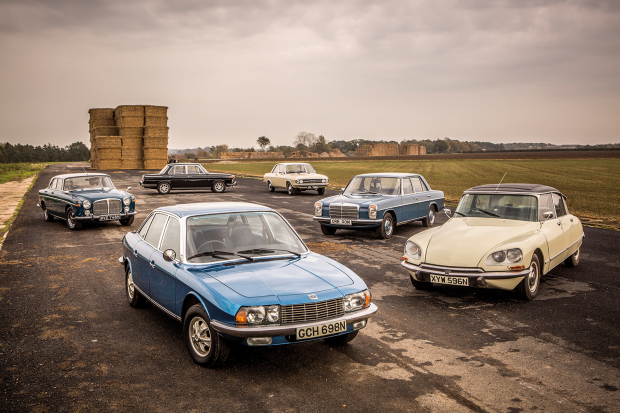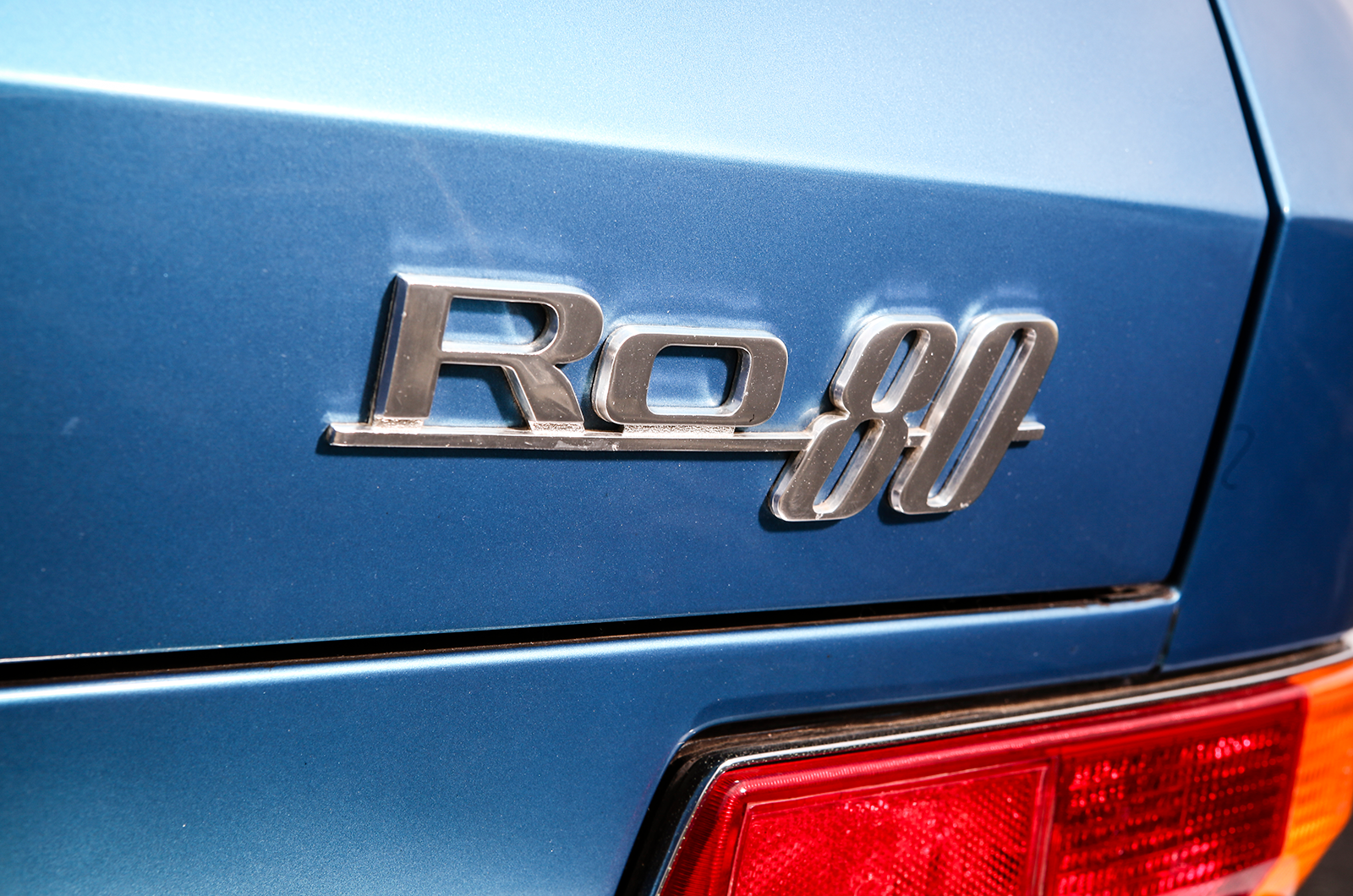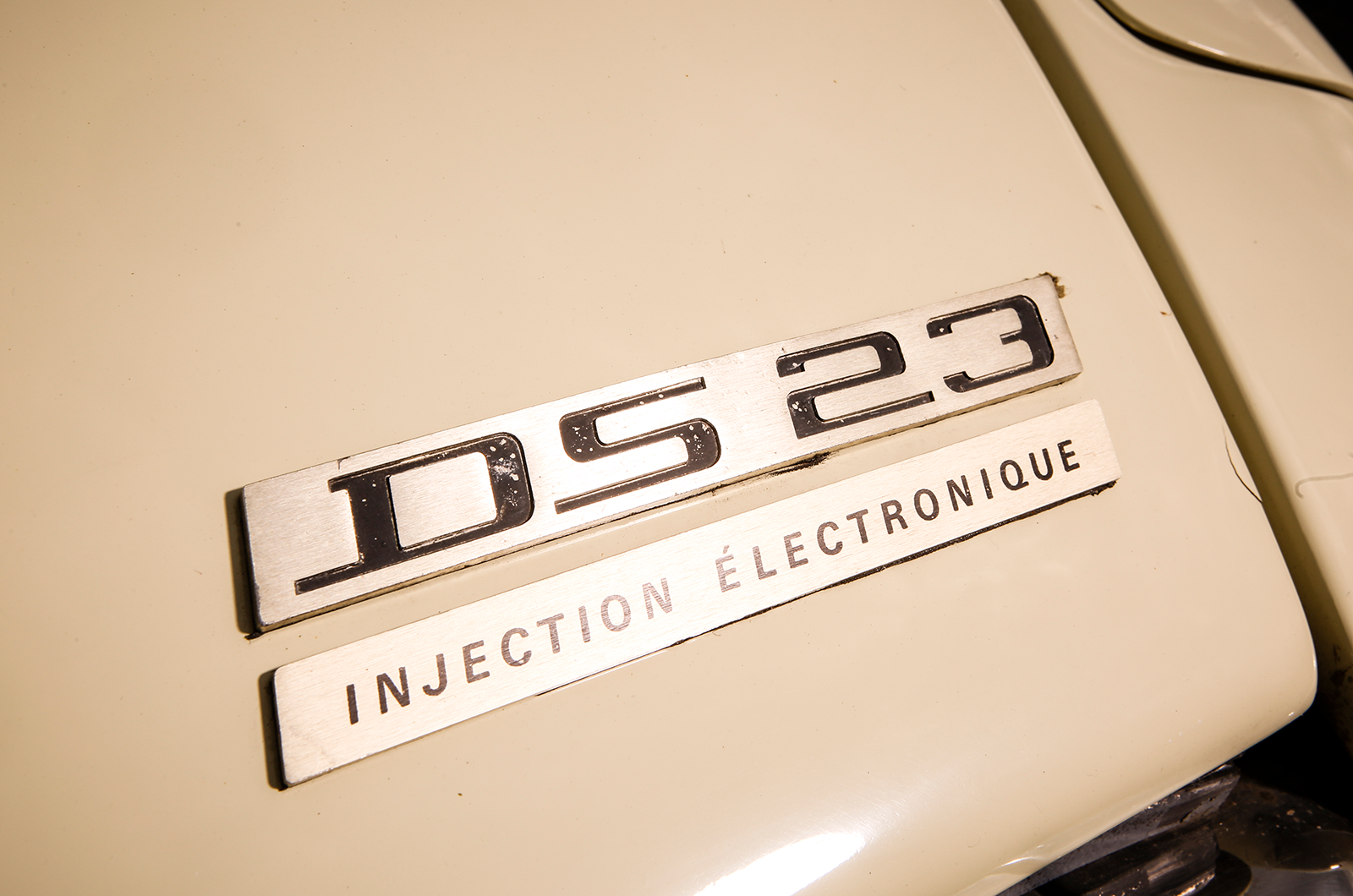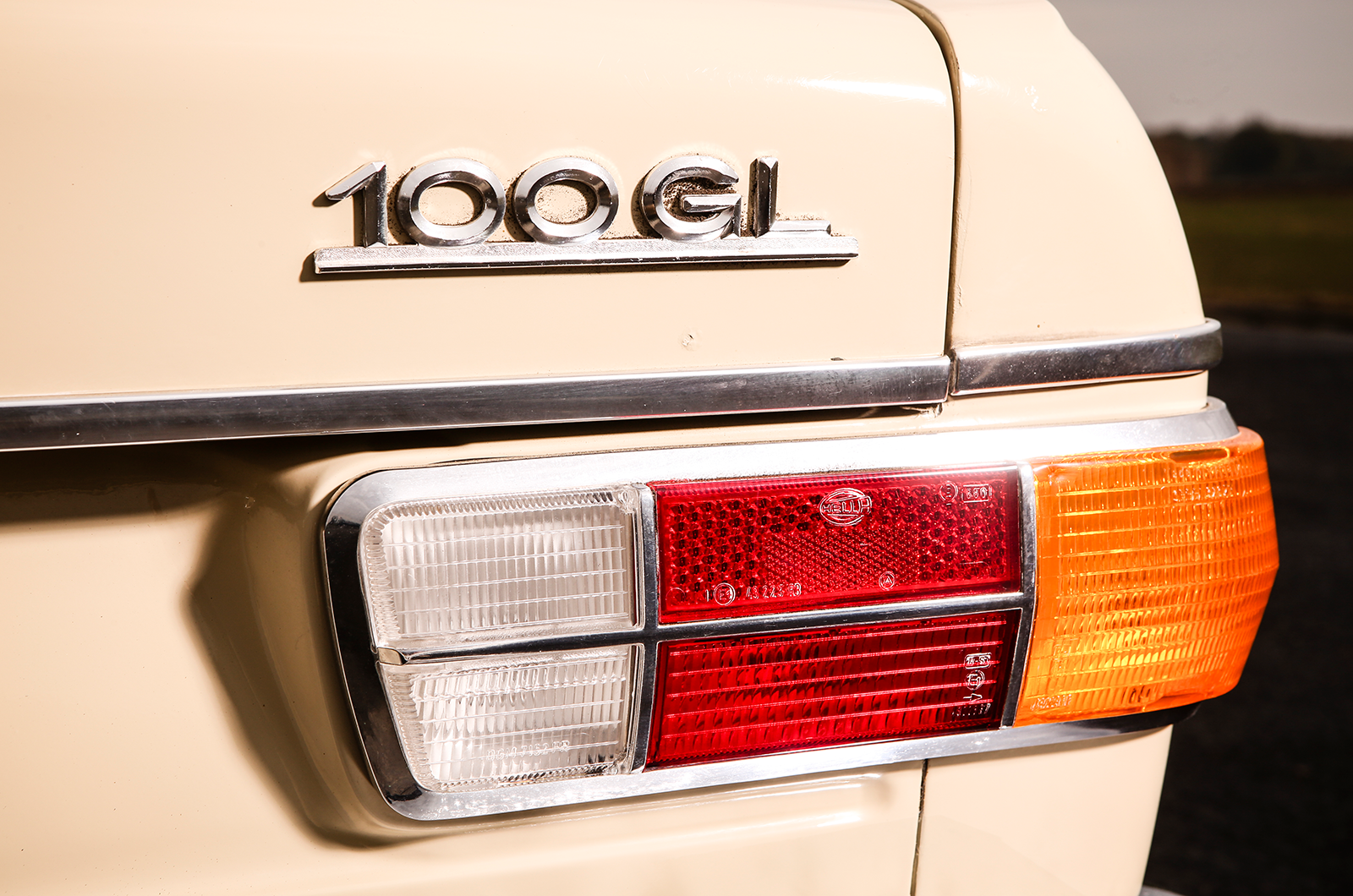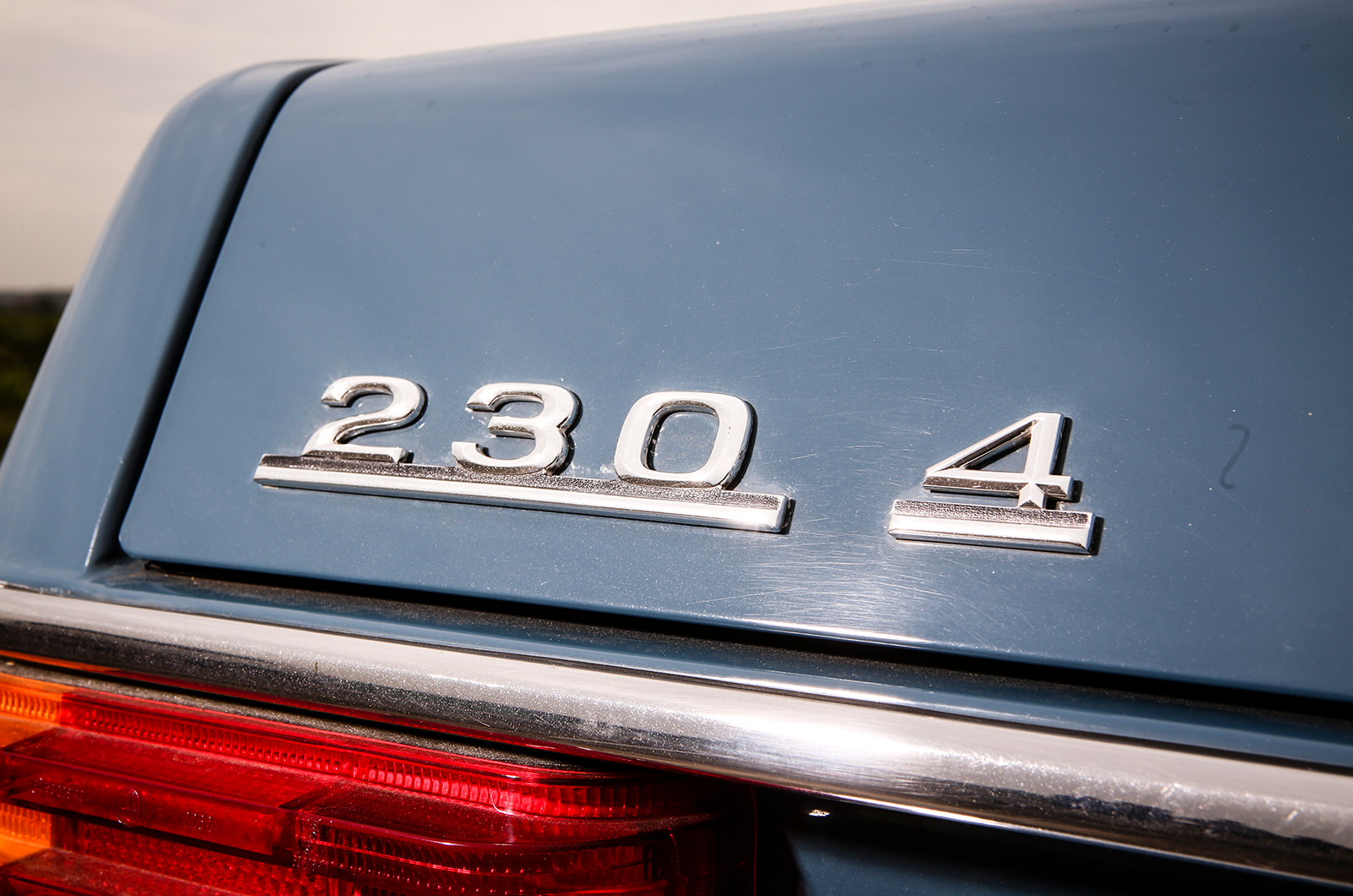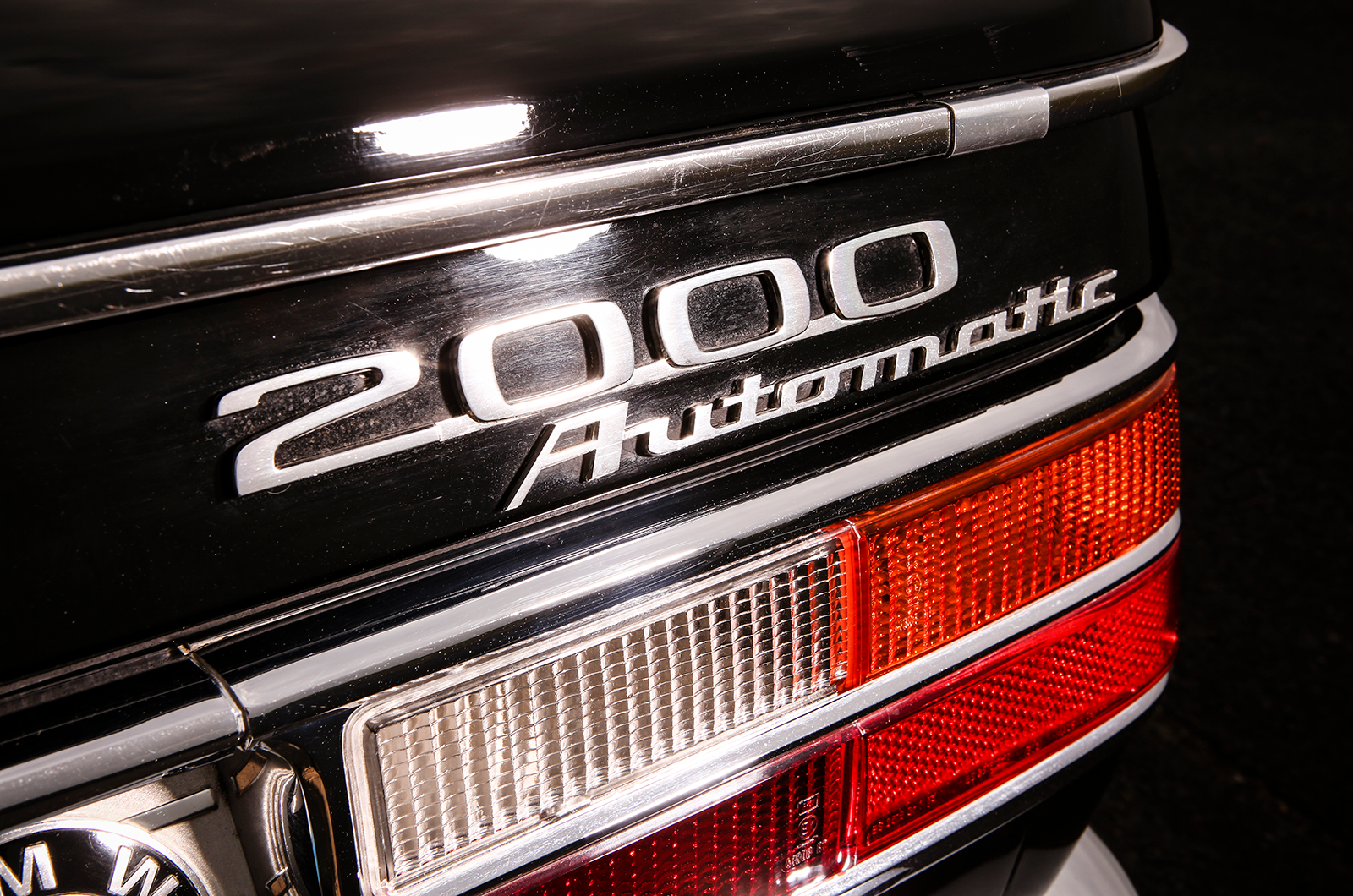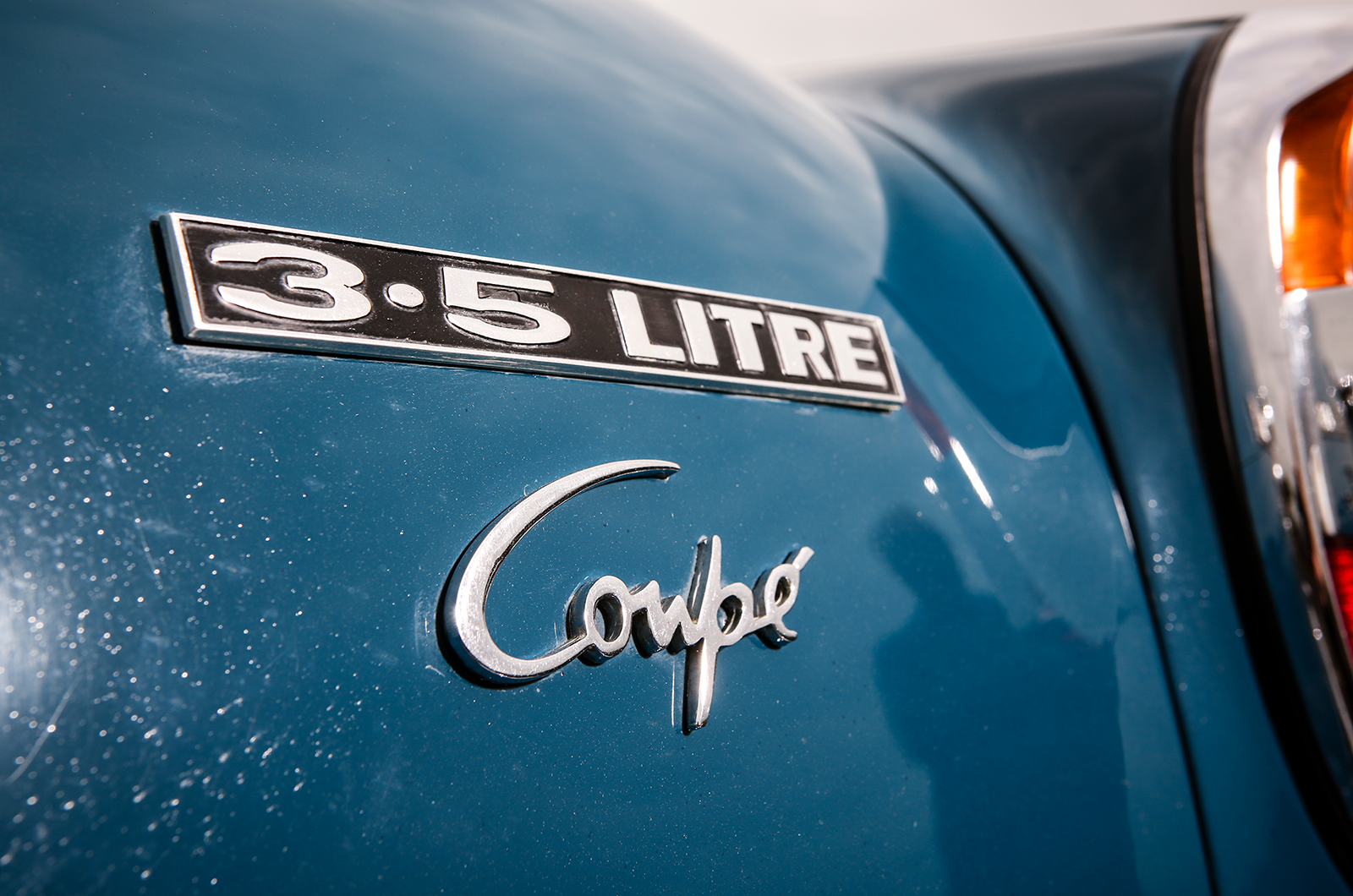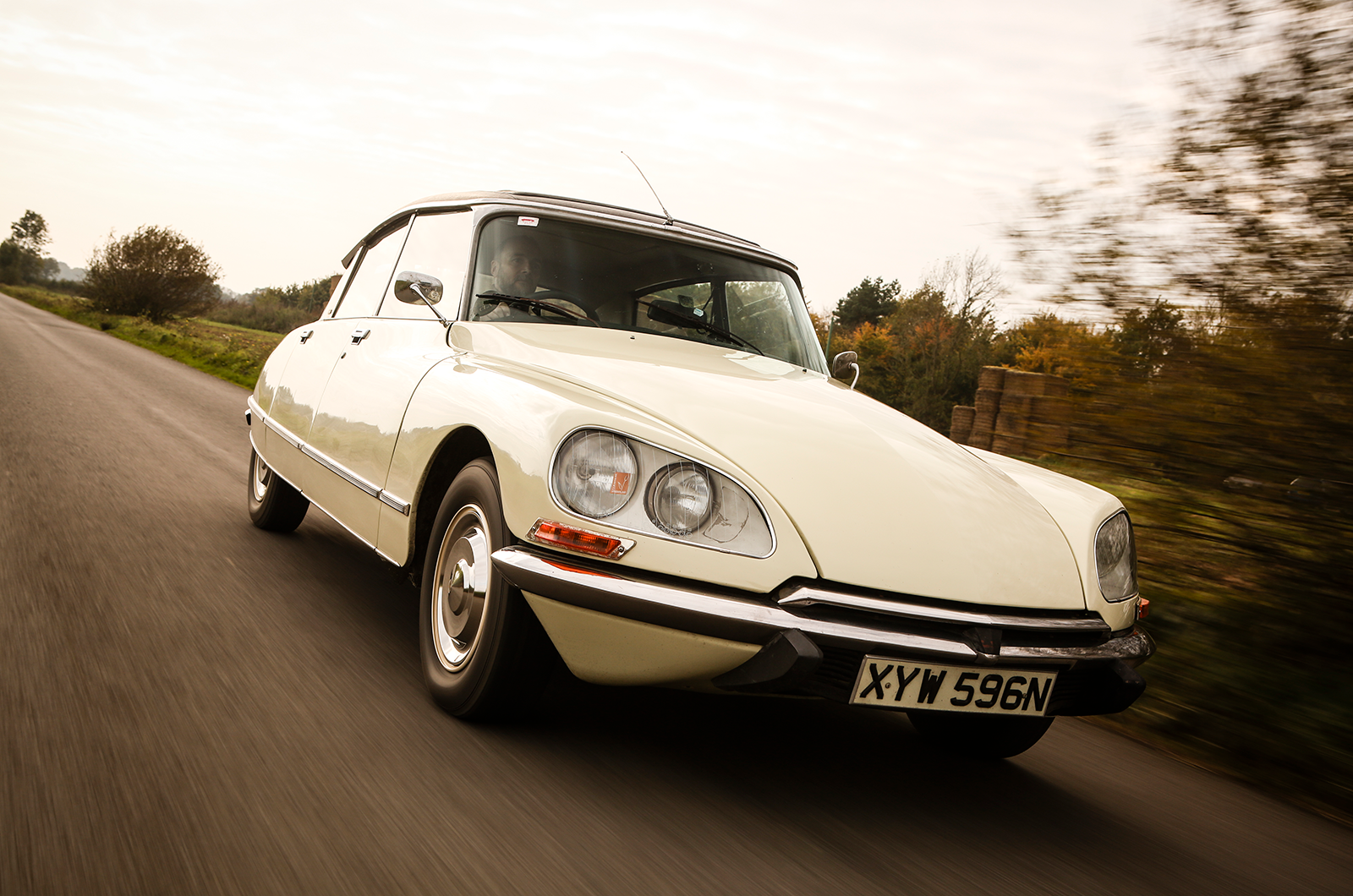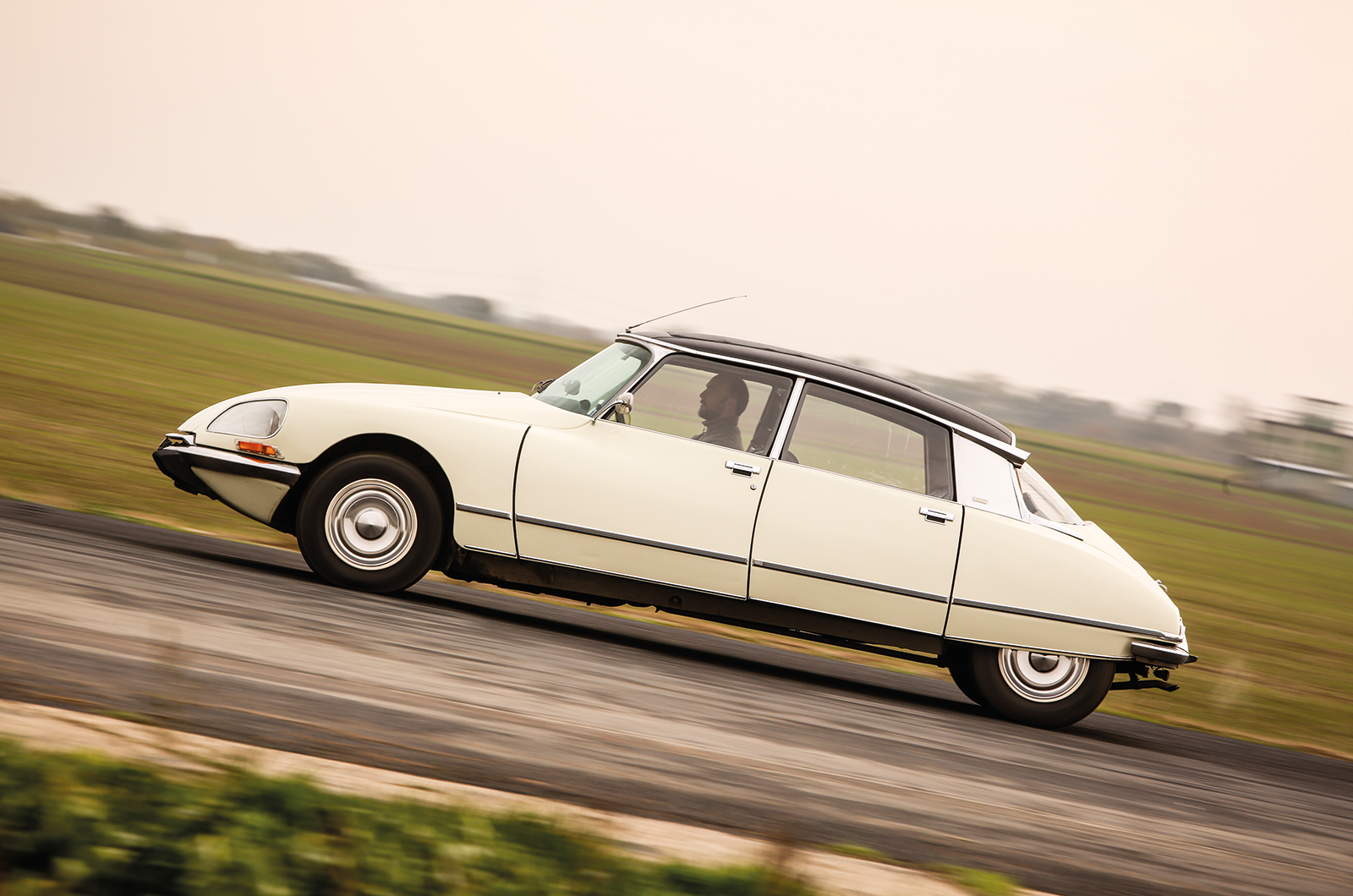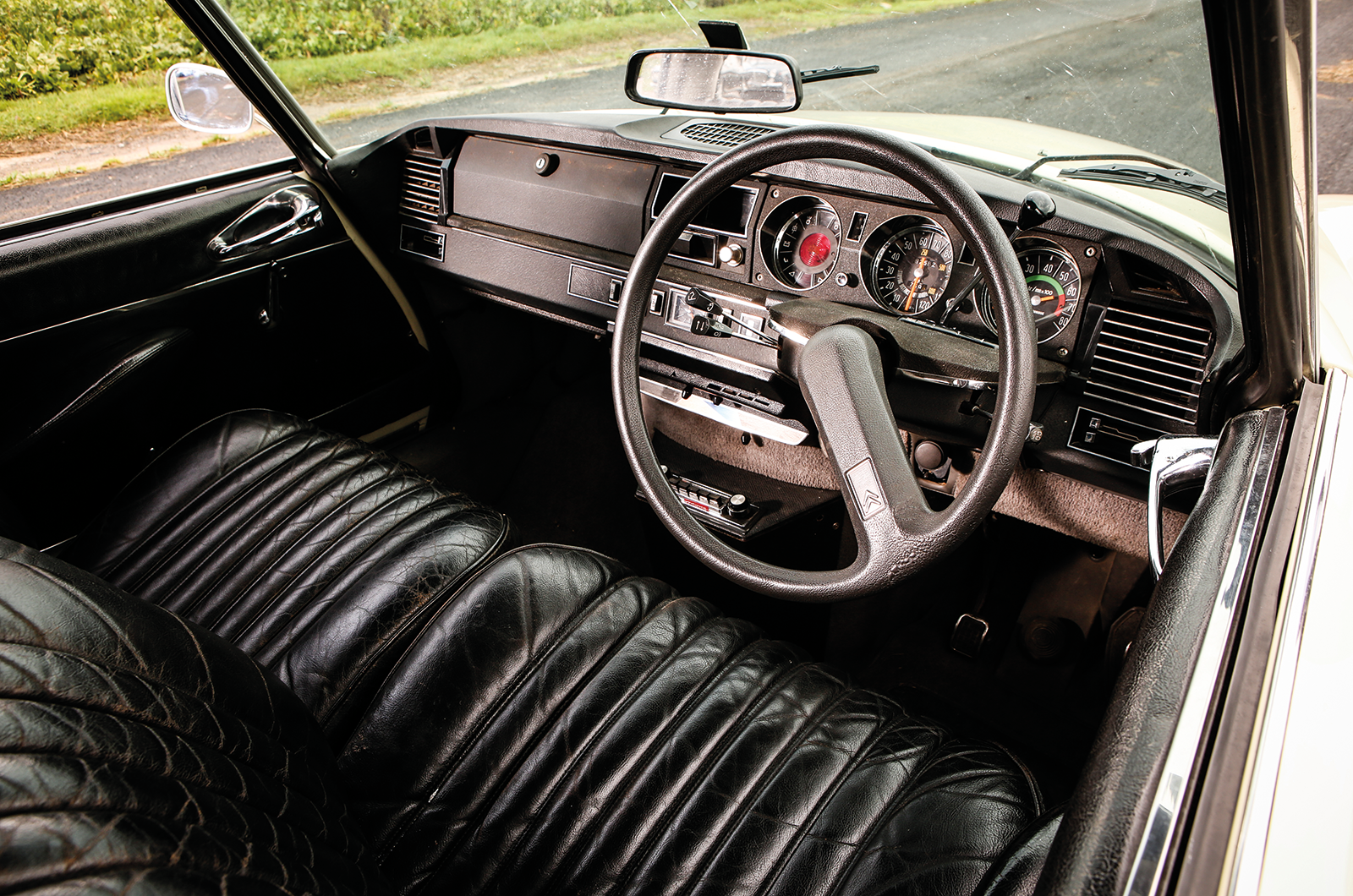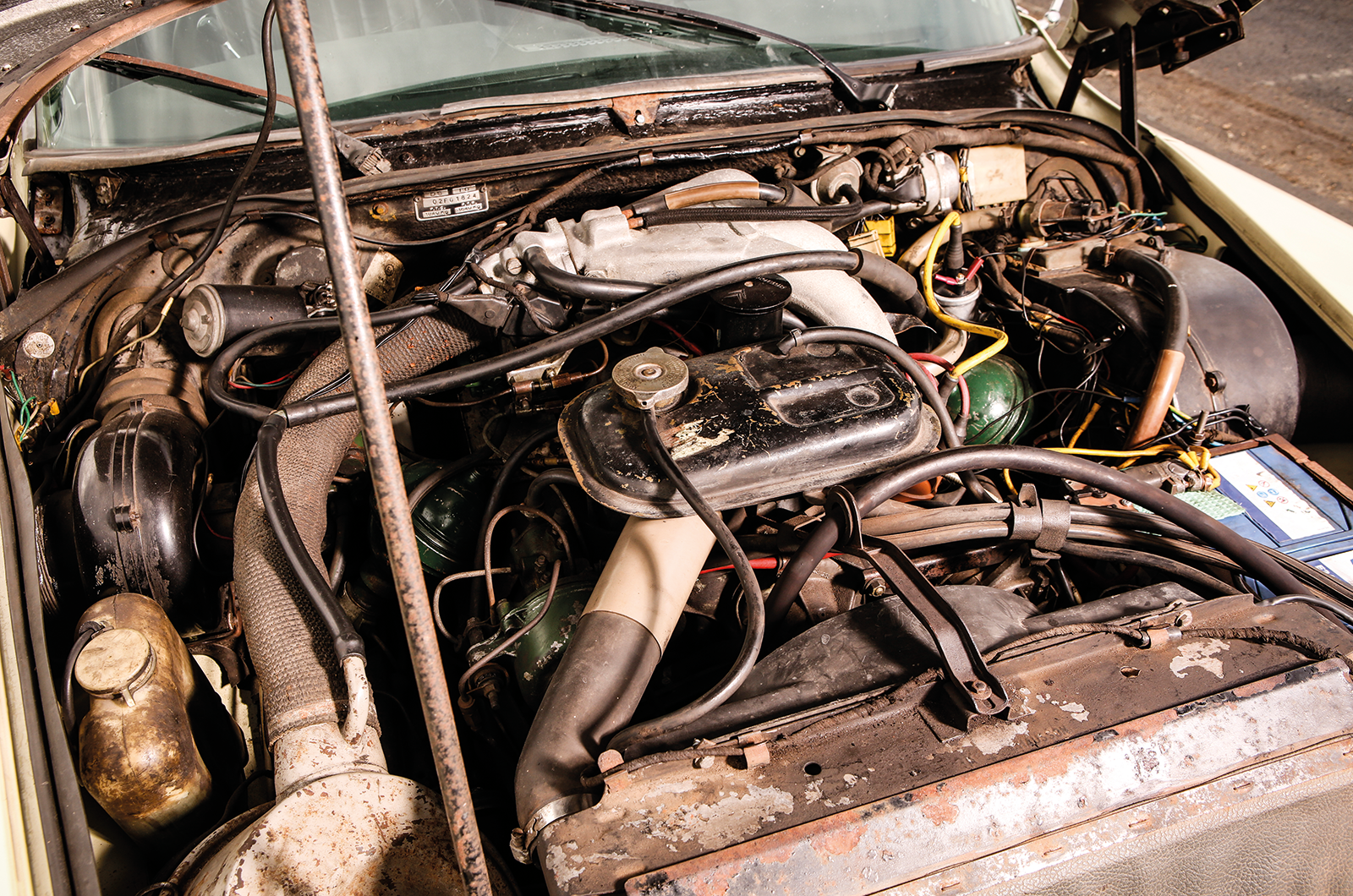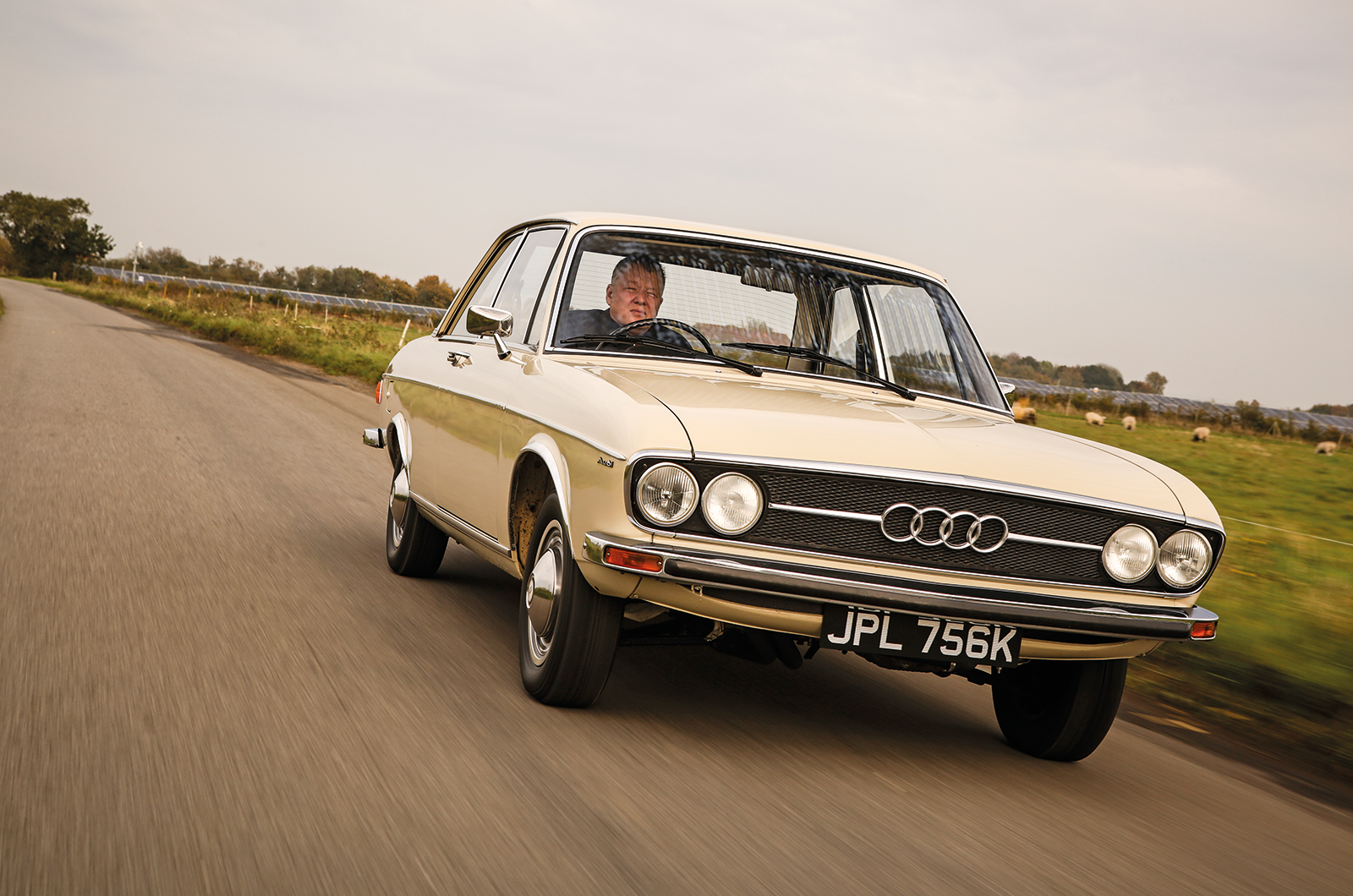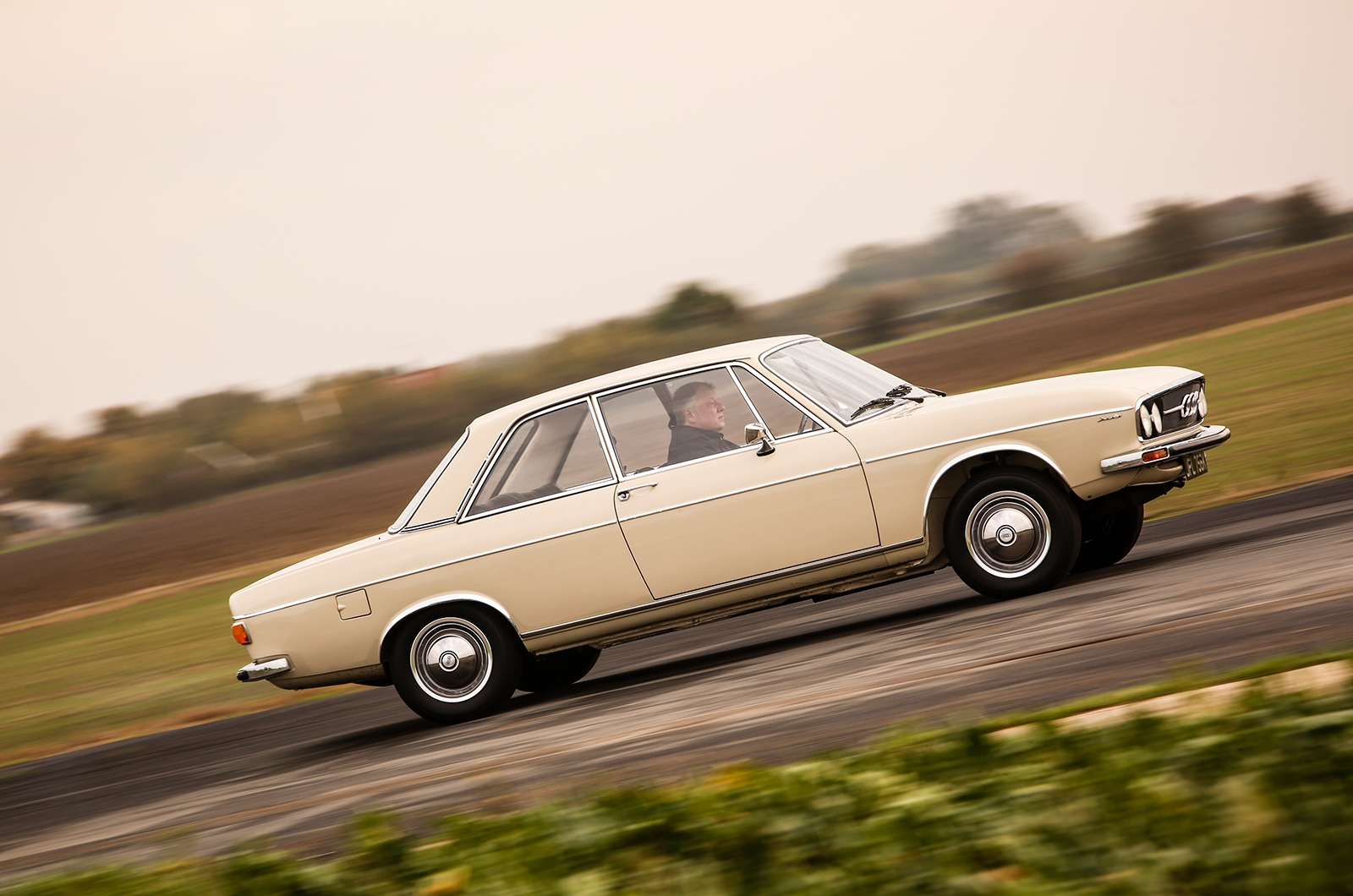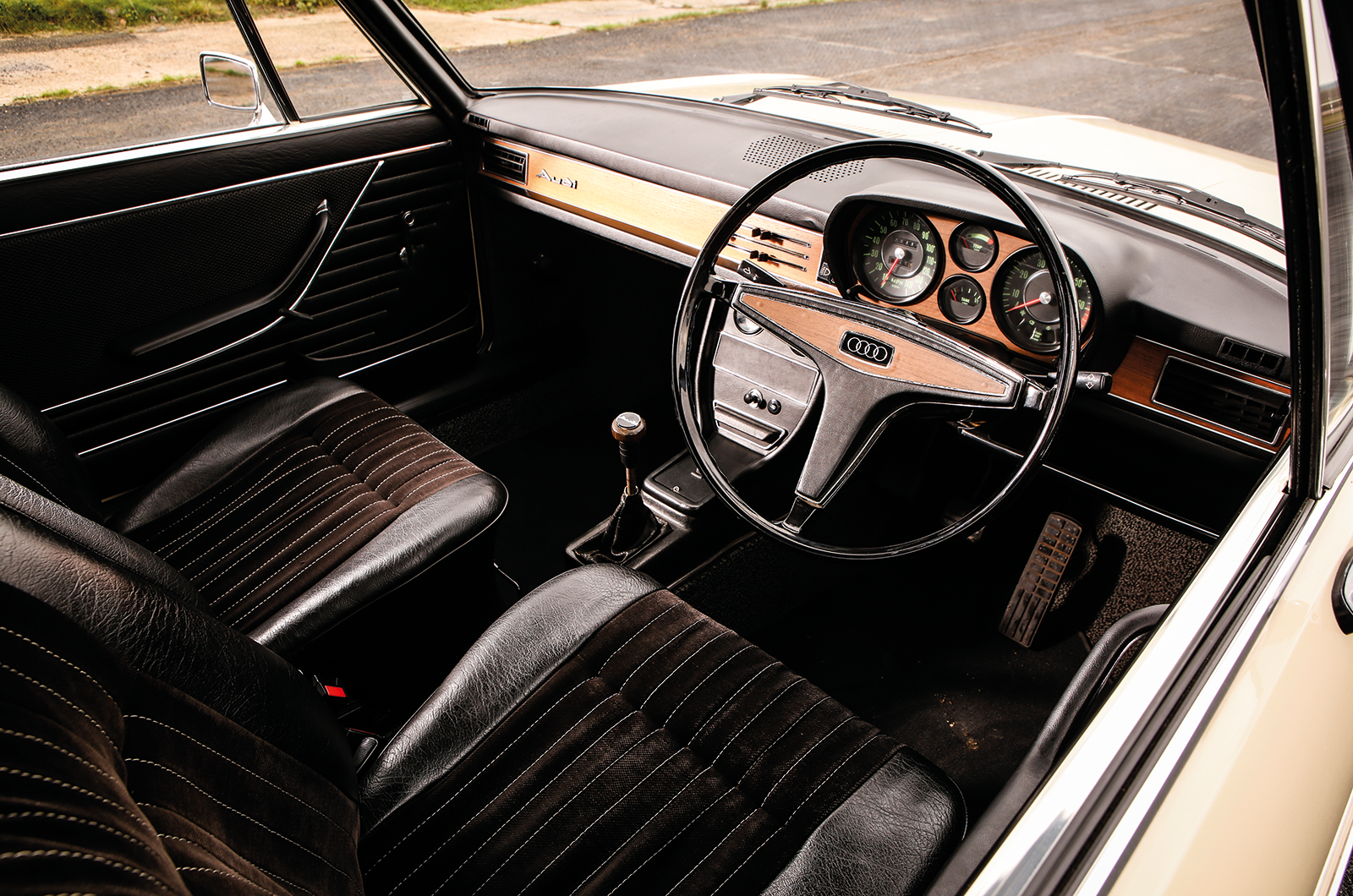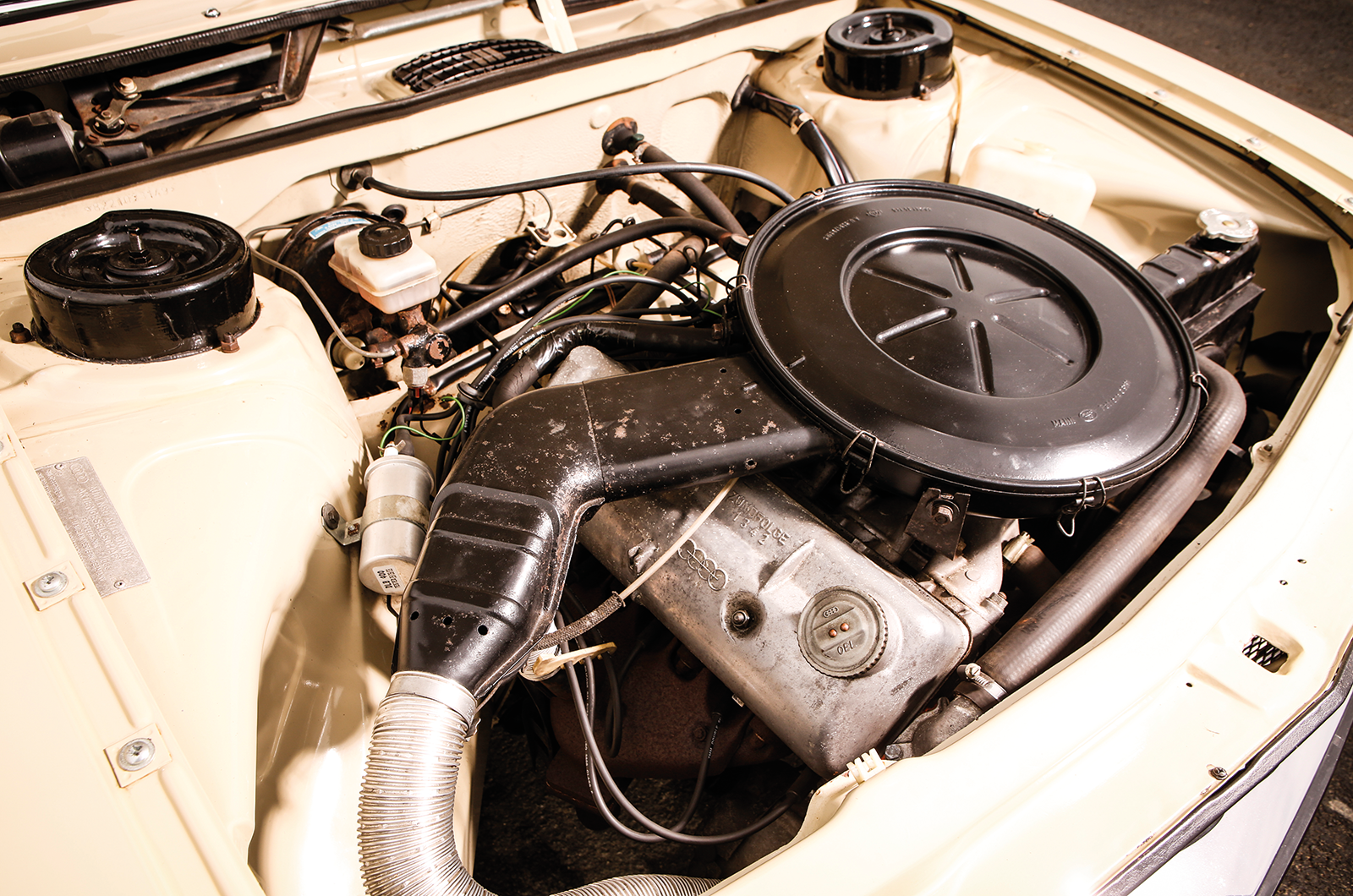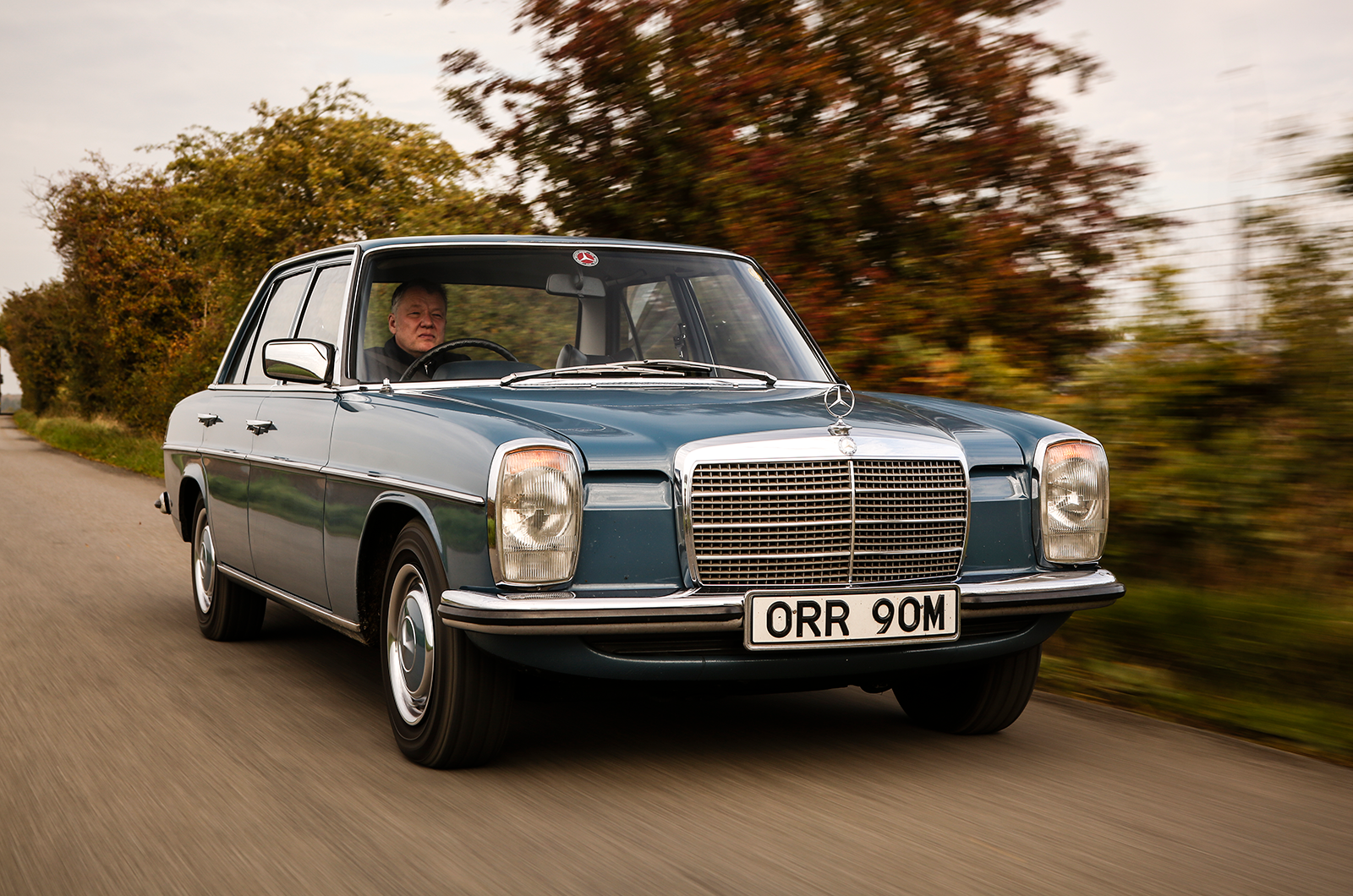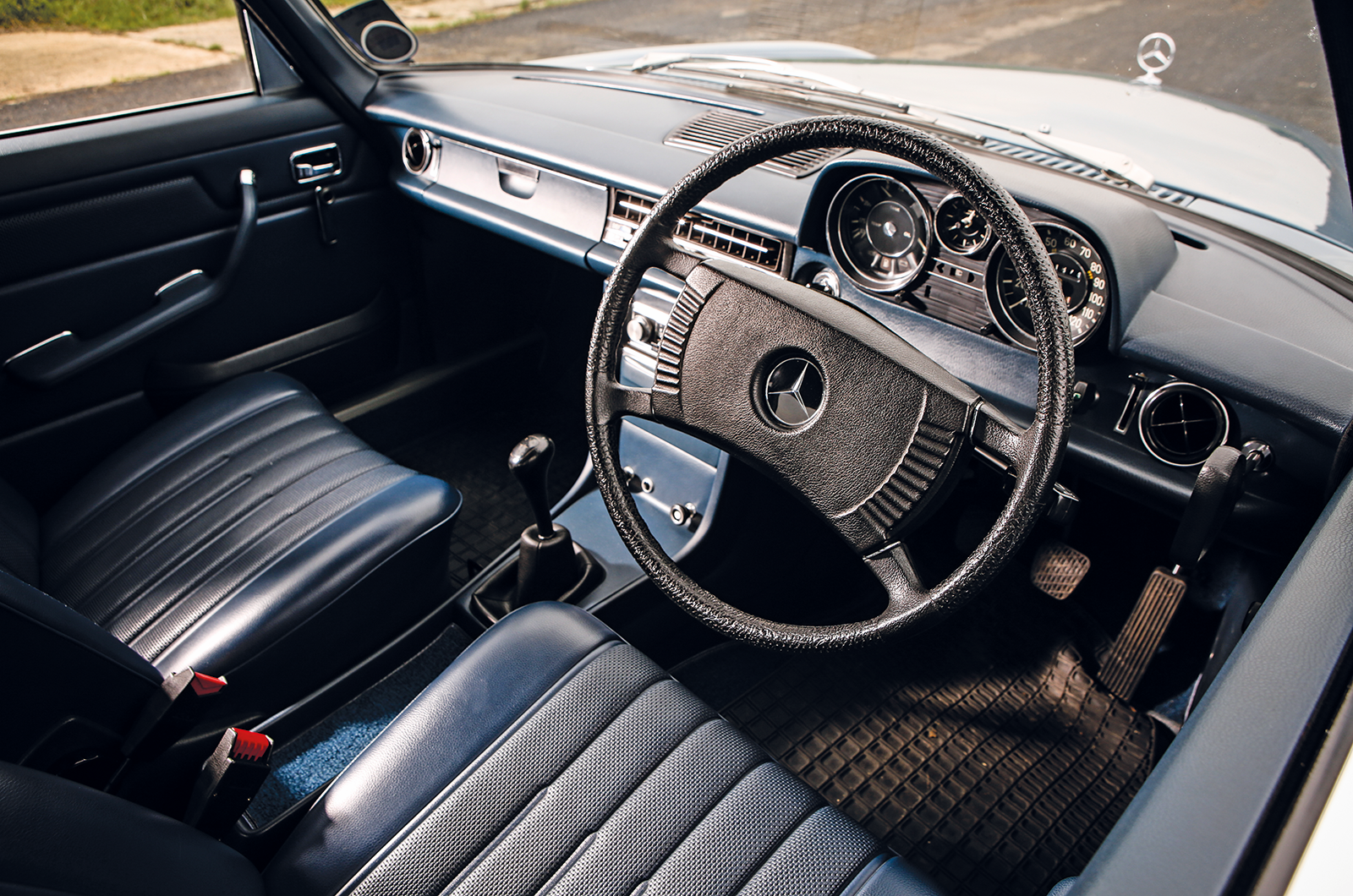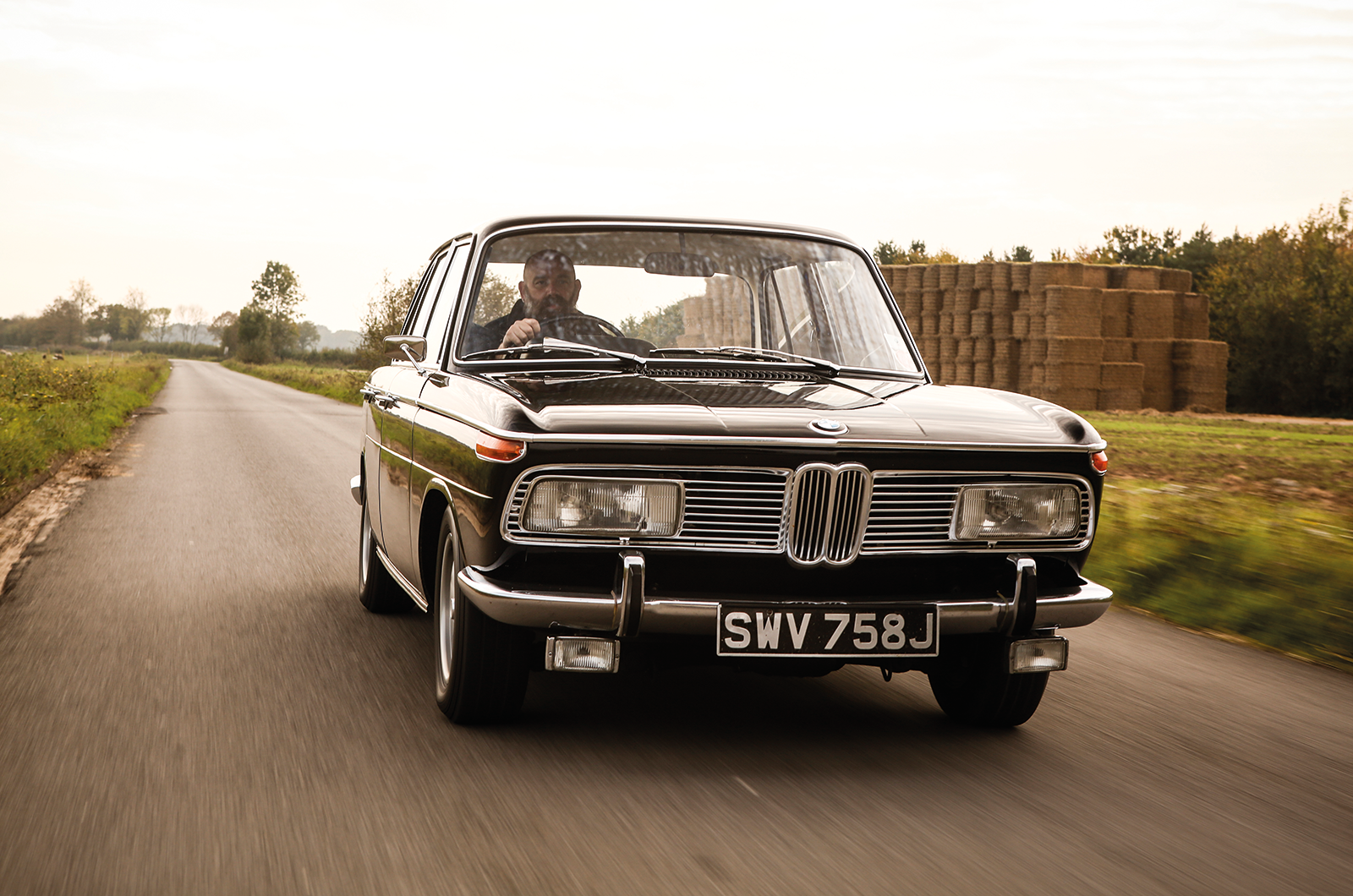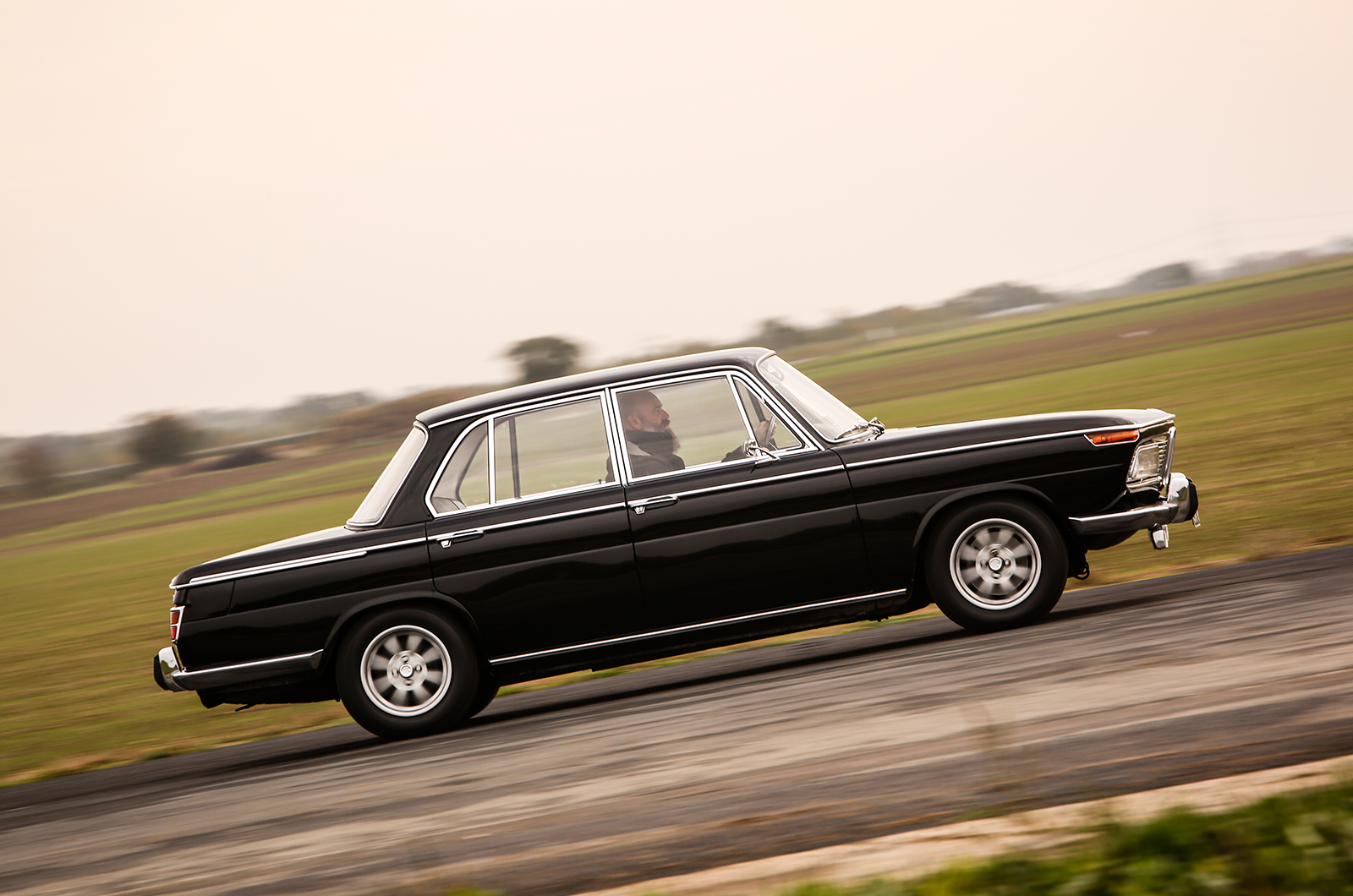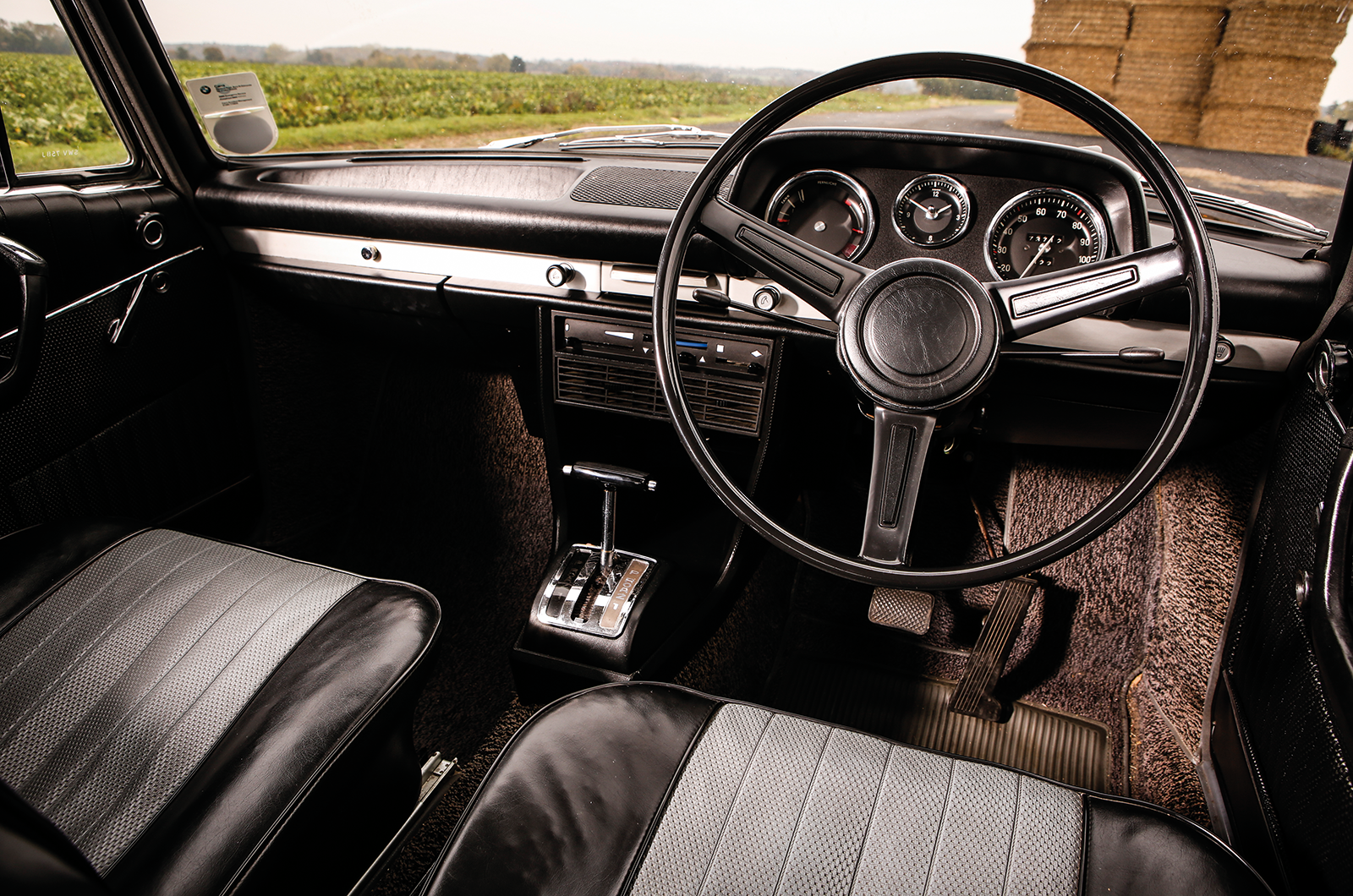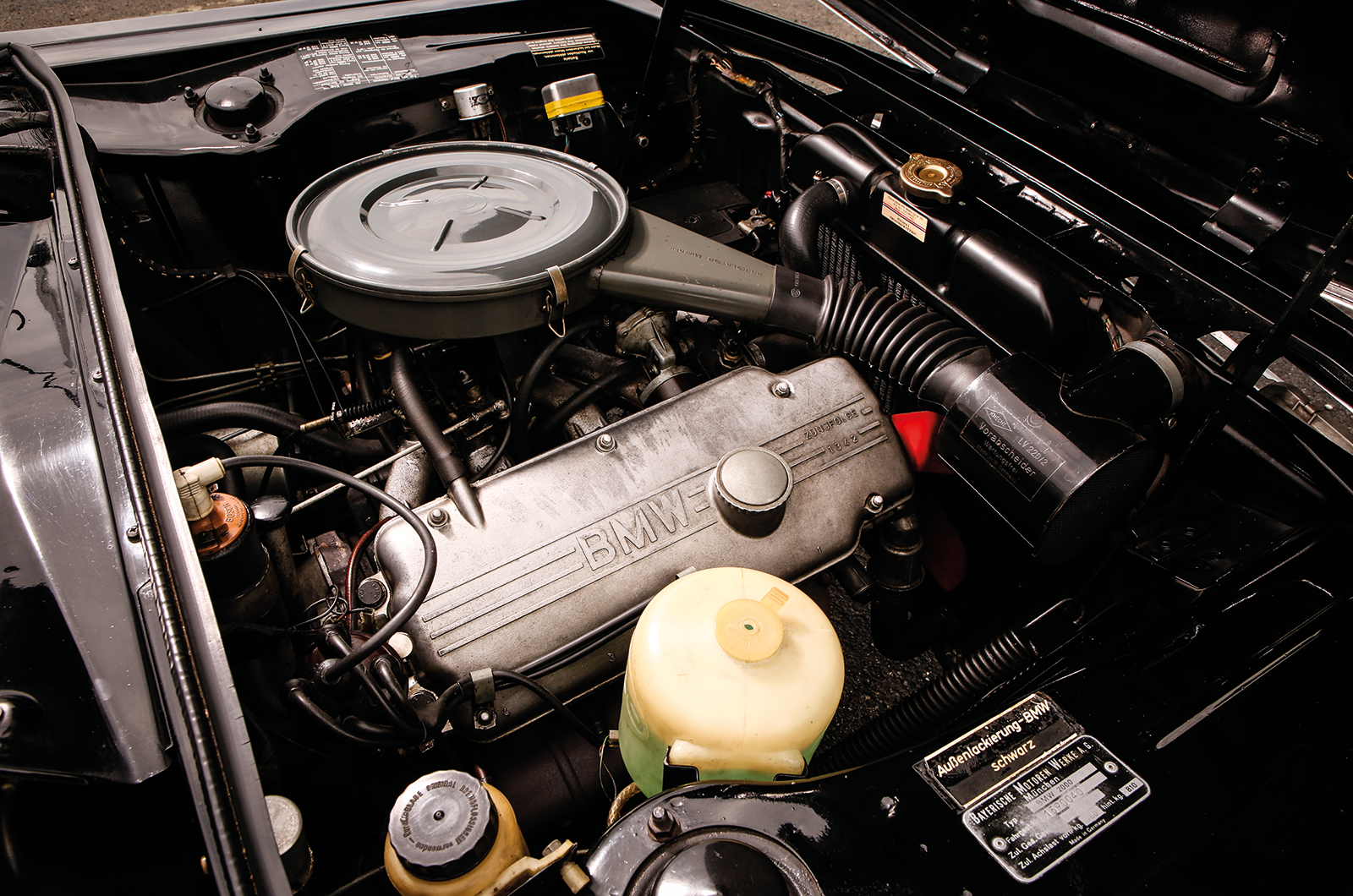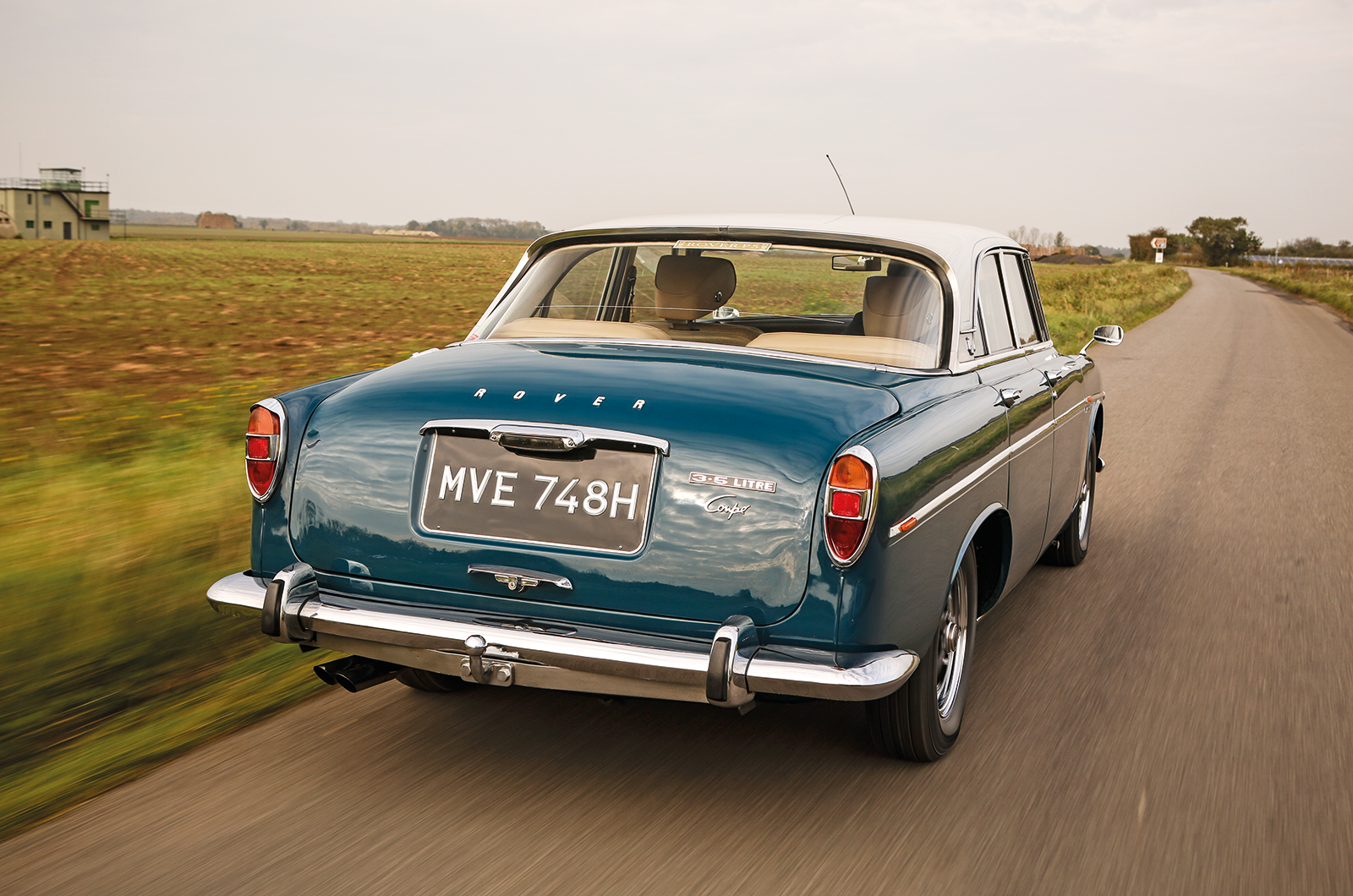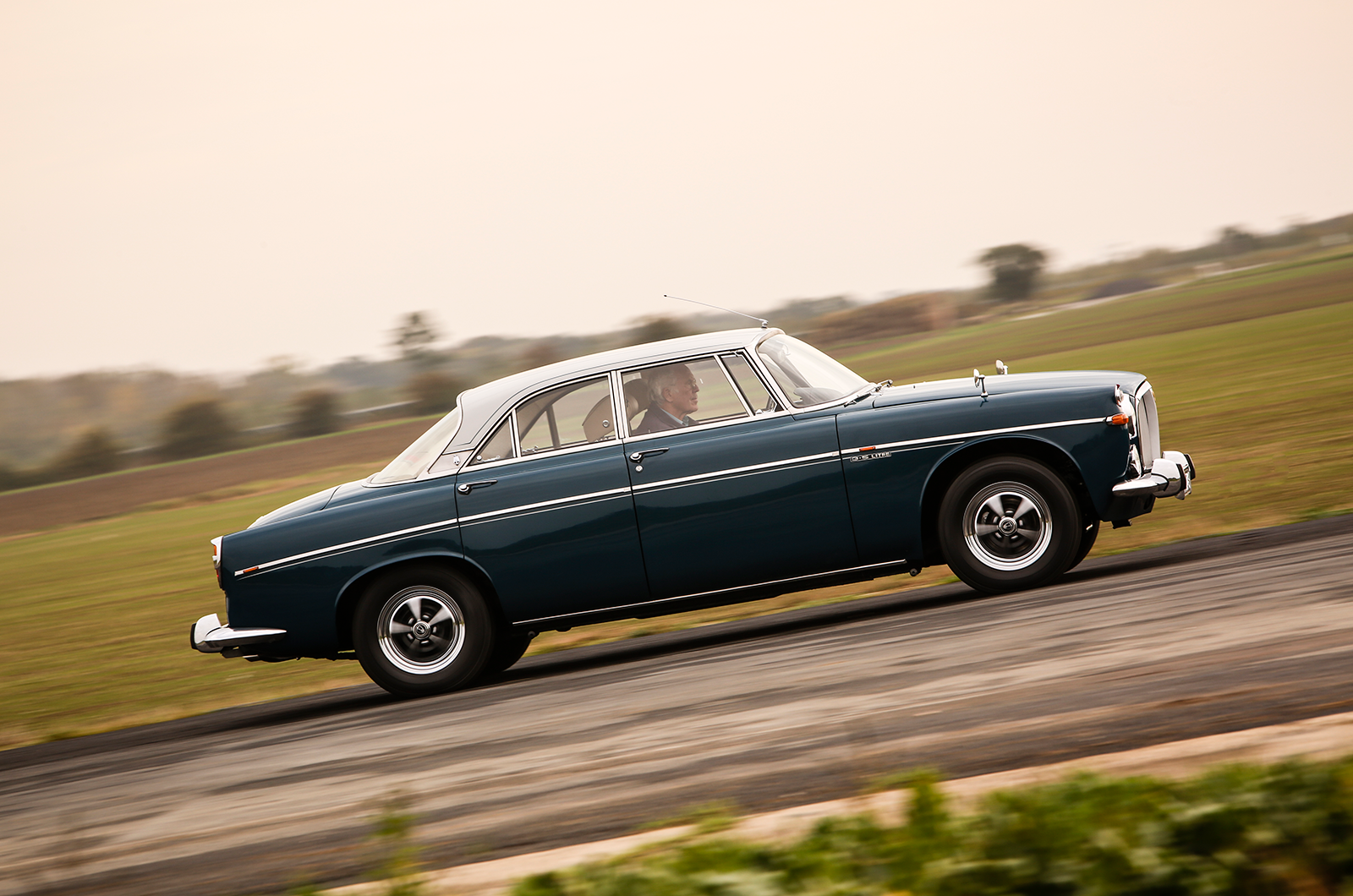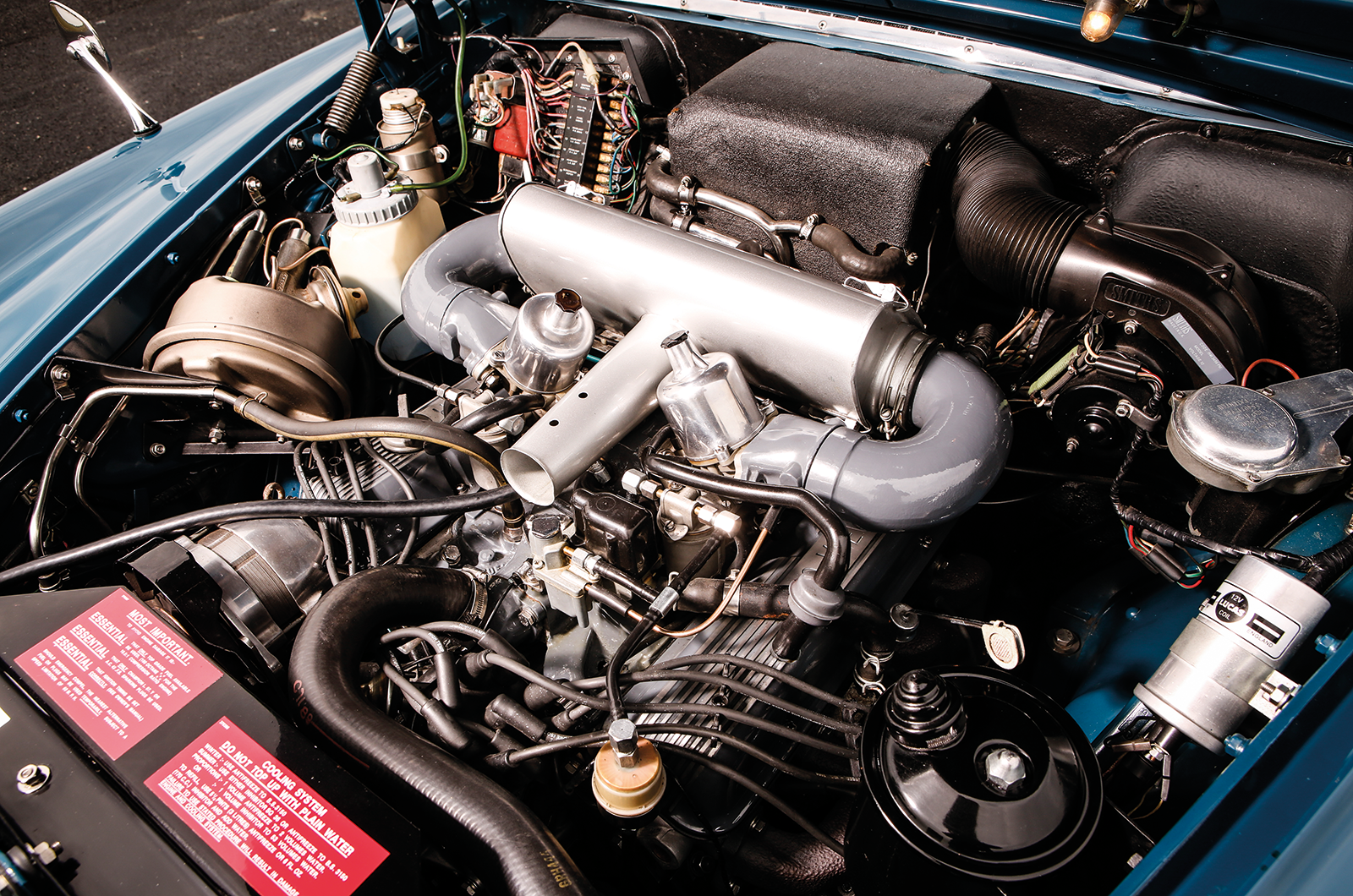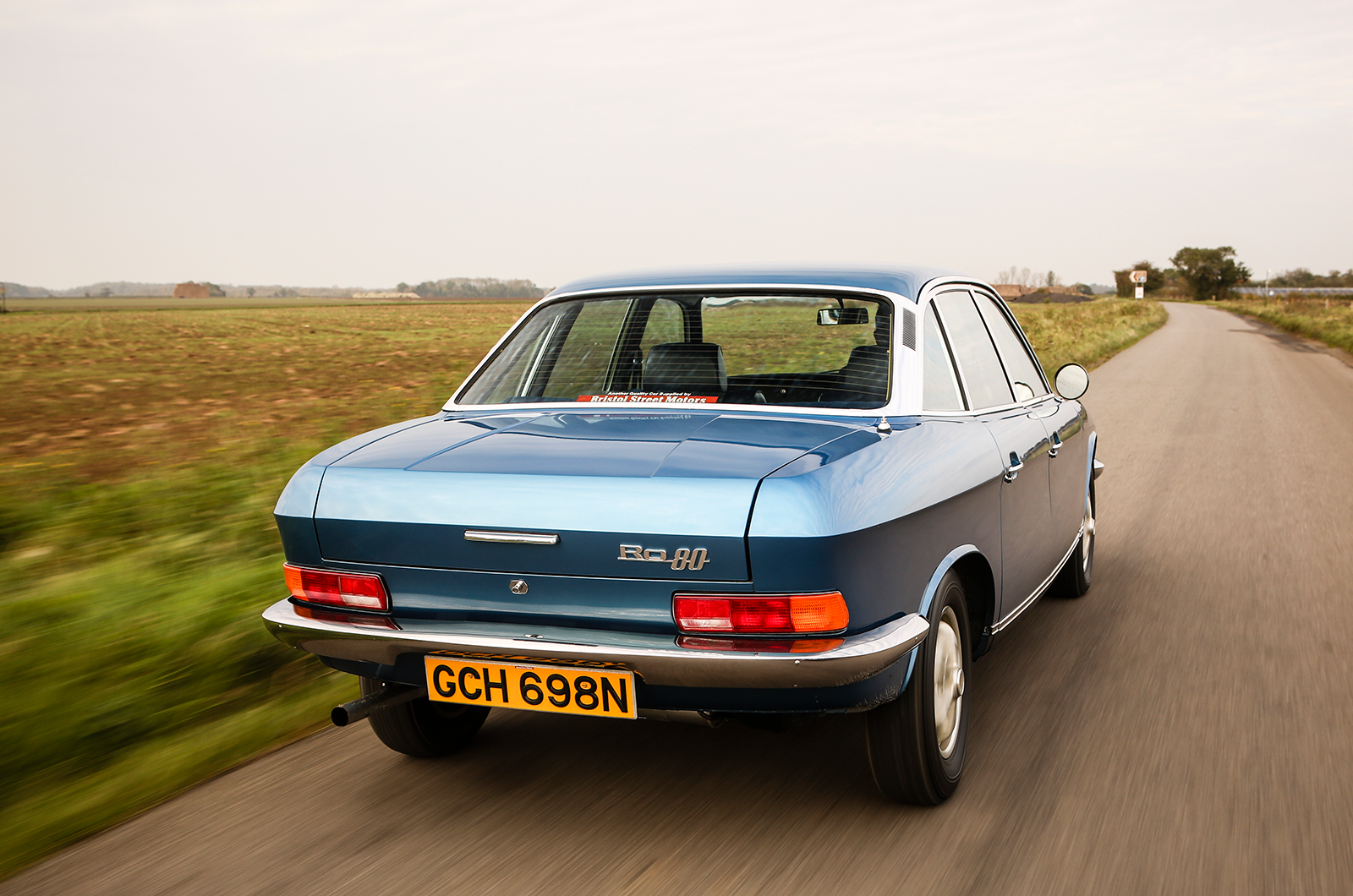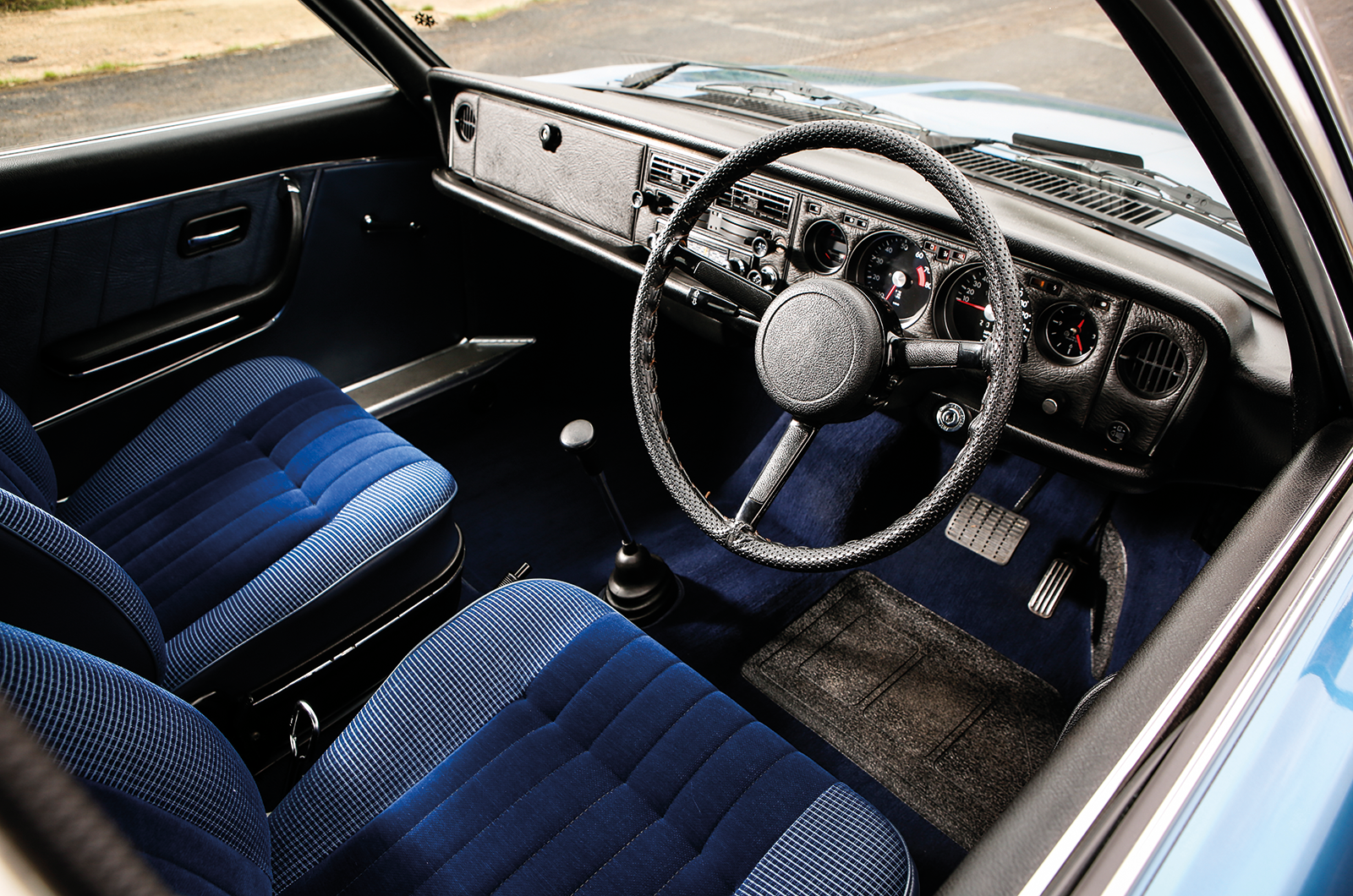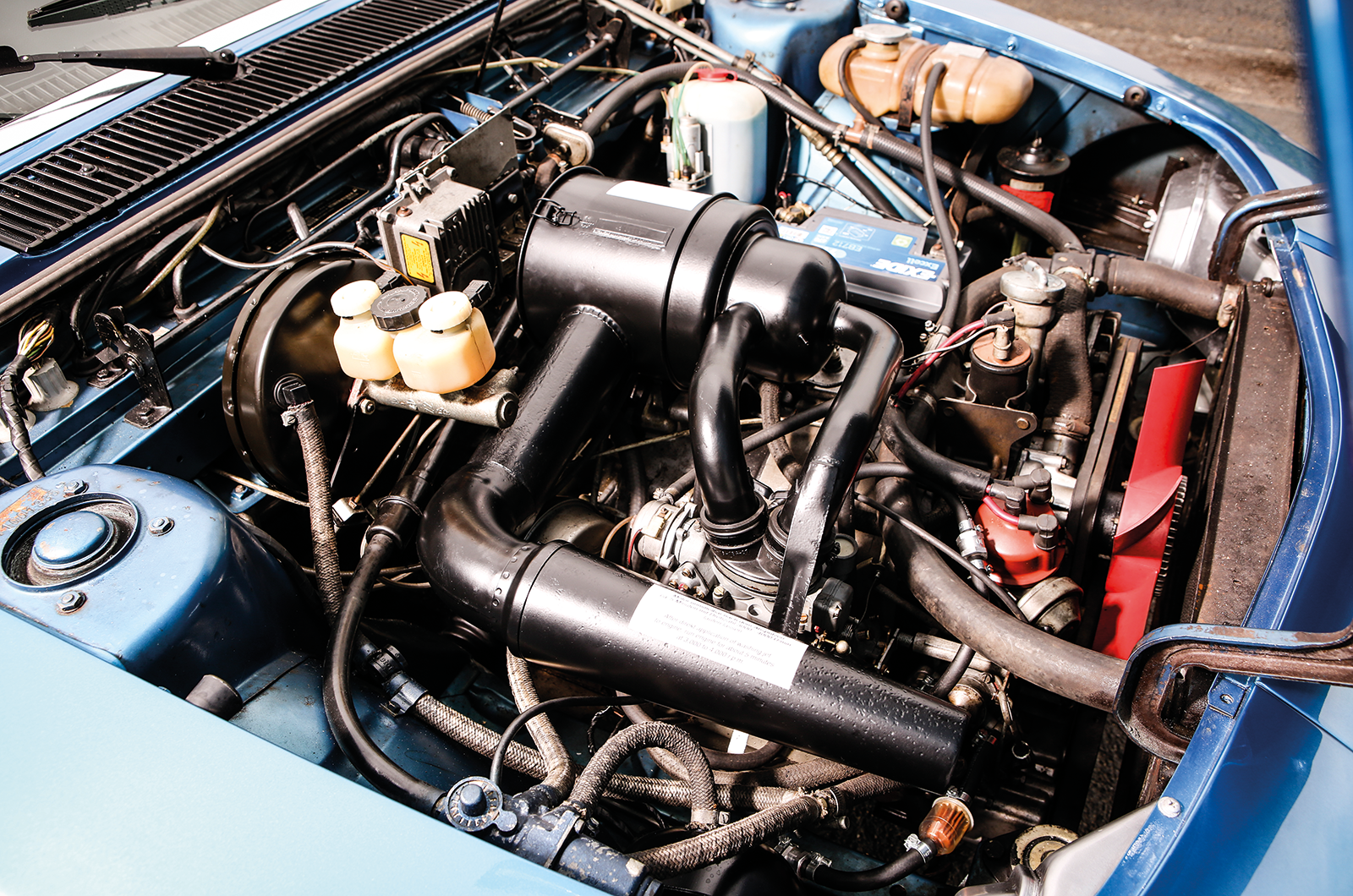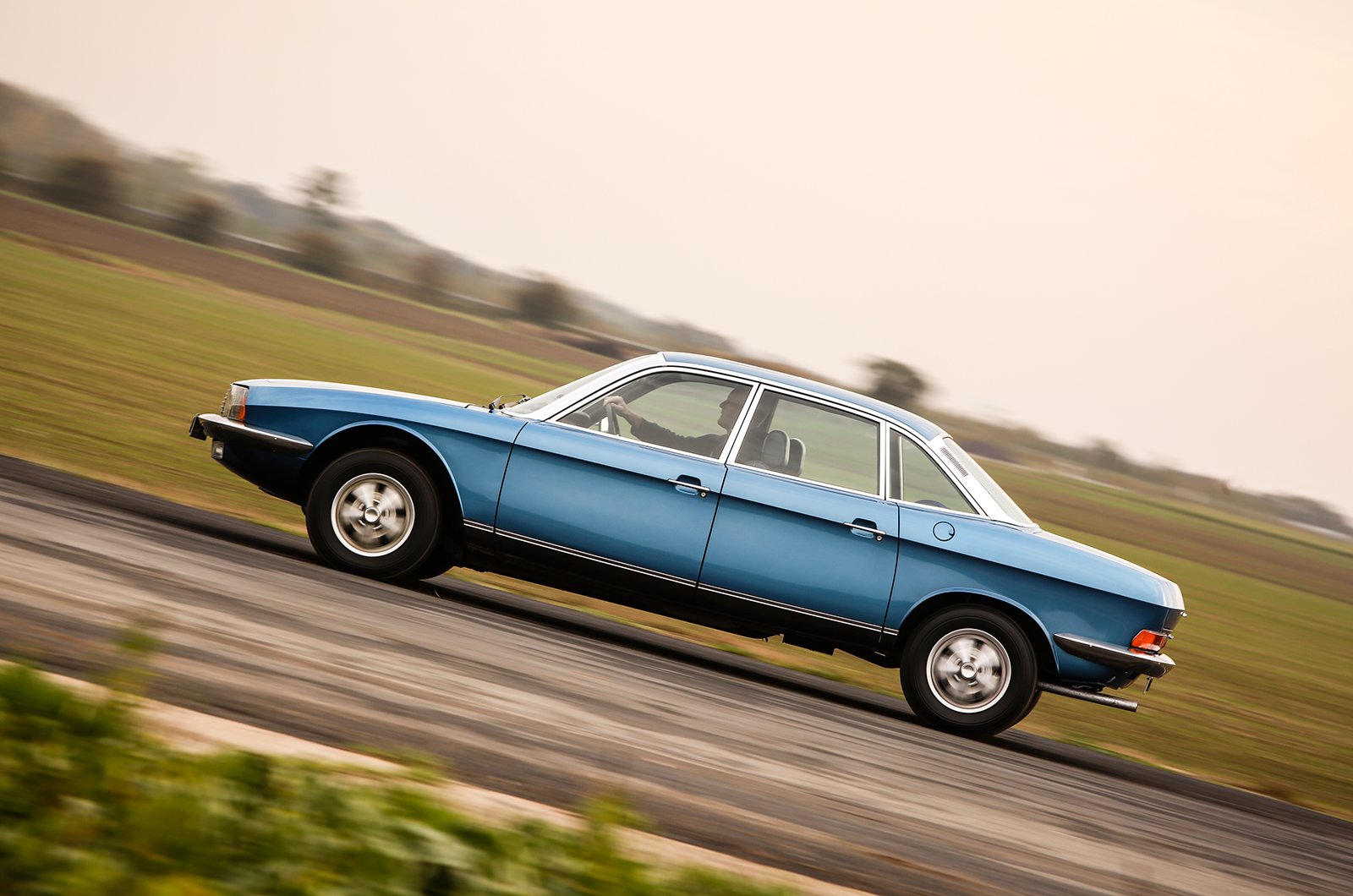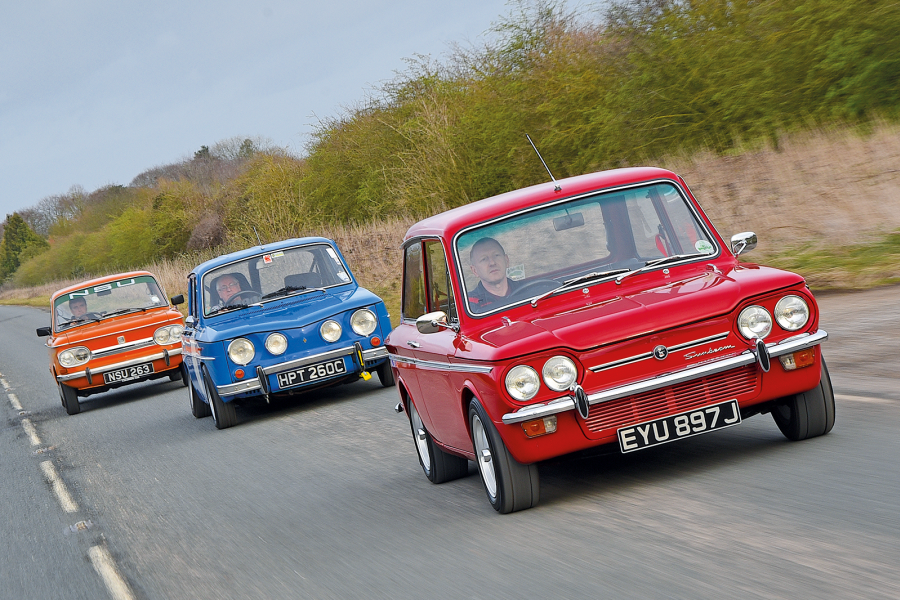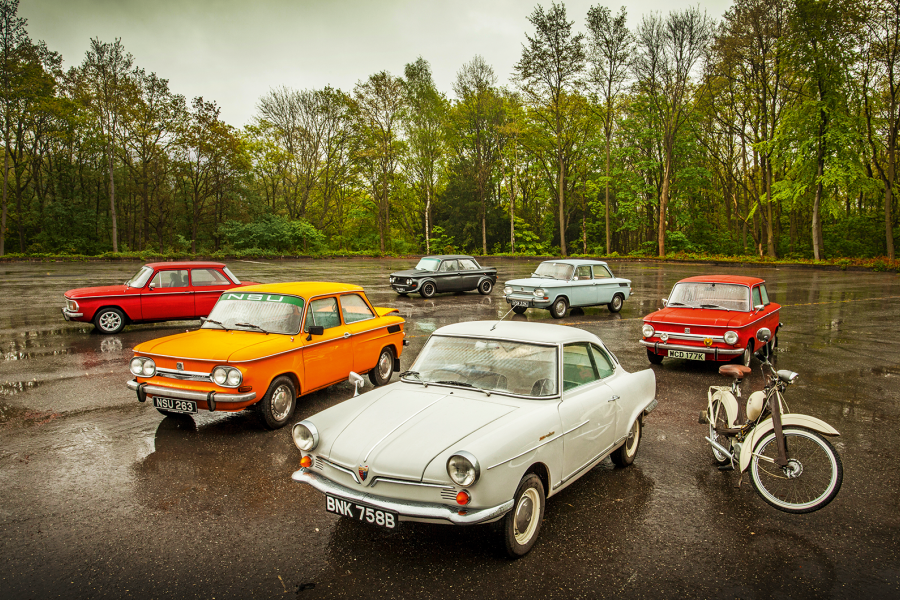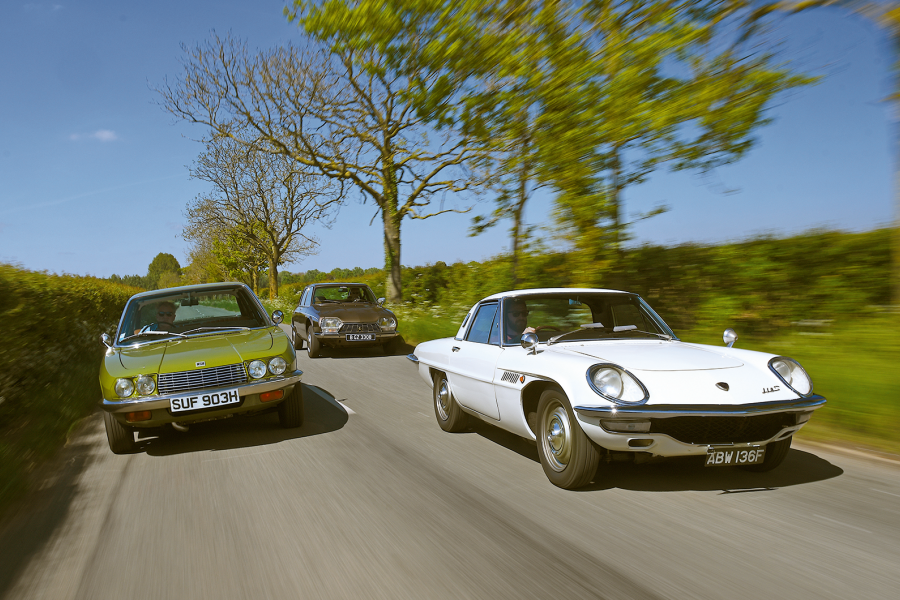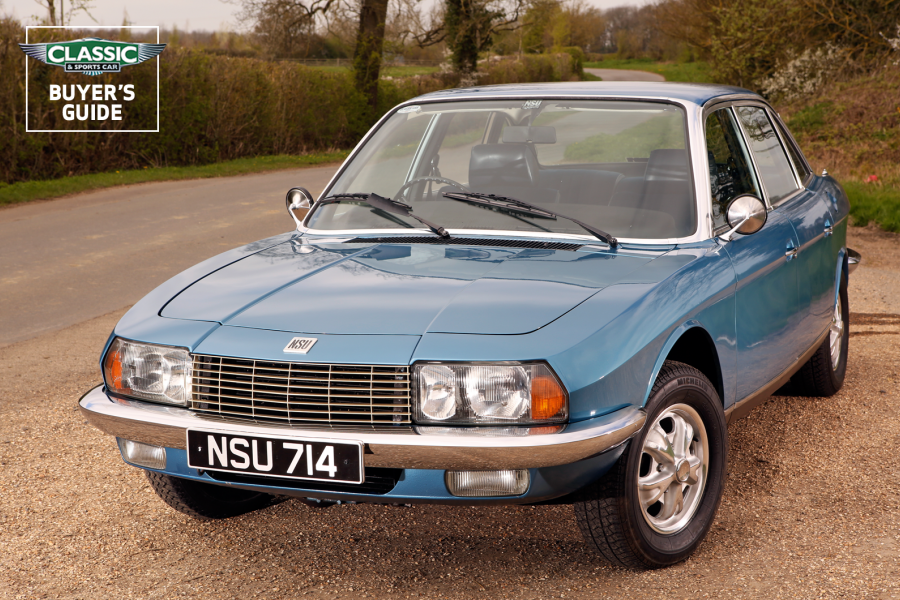The BMW 2000 was always more of an enthusiast’s machine and was basically the model that introduced British buyers to the marque 50-odd years ago, opening the door to the success of the ’02 range and the E3 straight-sixes.
These early four-door, four-cylinder BMWs have been a touch neglected over the decades, so Paul Hill’s delightful 2000 automatic is a rare and now much-coveted Neue Klasse survivor.
To modern eyes, you can see how the boxy shape could almost be mistaken for something east European, but the detail finish and nicely worked out (if not lavish) interior tell you that this a BMW. From your vantage point, you can see all the corners and you soon realise that you do need that big wheel when parking. On the move, the steering’s delightful precision is at the heart of the car’s appeal and the BMW soon lets you know that it wants to be driven fast and well.
Clockwise from top: rare factory black suits sporty late-model Neue Klasse 2000; ZF auto ’box still gives lively performance with singlecarb slant-four engine; two-tone vinyl livens up interior
Motor took a twin-carb four-speed manual TiLux to Northumbria in ’68, but the 2000 auto with a single carburettor and ZF three-speed ’box was popular in the UK. These early BMWs are perhaps unique in the world of four-pot ’60s saloons in that the slushbox option doesn’t destroy the engine’s urge. They showed people that good performance and decent fuel economy were not mutually exclusive and that refinement didn’t have to equal weight and clumsiness.
The soft engine mountings, plus the cushioning effect of the torque converter, lend the power unit near-six-cylinder sweetness as it revs and there is enough torque to give the 2000 energetic acceleration with a keen mid-range kickdown. You are reasonably aware of the lean, more so because the seating position is quite high in a car that, by the early ’70s, was already looking ever-so-slightly tall and narrow.
“One of the best-looking British four-door cars of all time”
The Rover 3.5 Litre, designed in the ’50s, seems something of a fish out of water among this modern Euro-saloon line-up of rational 2-litre machines. To understand its positioning, you have to look at the prices: at £2174, it was cheaper than everything other than the BMW. For that you got a beautifully finished V8 saloon that looked bigger than all the others yet was an inch shorter than the NSU, even if it weighed almost 1000lb more.
This Coupé, owned by John Wallet almost since new, is one of the best: I feel extremely honoured to be the first person John has ever allowed to drive it. He probably noticed the twinkle in my eye for a model I have always loved (I’ve had five or six) and always will.
It might be thirsty (15mpg) and have super-light steering, but you can’t really compare the feeling of wafting luxury that it gives you against the others – or the sheer presence of its handsome, squat-roofed body. It might be a terrible piece of packaging – lacking in head- and legroom for rear passengers – but in Coupé form I think it is one of the best-looking British four-door cars of all time.
Clockwise from top: distinctive Coupé has 21/2in lower roof; twin SUs sit in vee; trad timber fillets and plump, leatherclad chairs
In a way, the Rover has become better with age, its subtle charms outweighing its dynamic failings. In 1968, the mostly youthful Motor writers could not get on with the big 3.5 Litre on the twisty roads of their northern test route, yet they were all surprised by the ease with which it kept station with the other cars.
It is not a vehicle that is naturally disposed to being hustled or hurried, although a good P5B will readily hitch up its skirts when required. It just tends to feel more dramatic, less inherently nimble than these middleweight Euro types. Body roll is, actually, far from scary and that light, high-geared steering is somehow part of the experience.
In the end, the Rover is easily the most suave of these cars, its natural habitat being either the city – where the torque, the effortless steering and auto ’box mean that you can burble around with an aloof feeling of isolation on those fantastic seats – or the motorway, where it is solid and stable, with silky V8 urge to spare.
No, there’s nothing like a P5B… except perhaps a Silver Shadow, which you can now have for about the same money – a thought that for me tends to put the charms of the Rover into perspective.
Ro80 is “sensationally refined and deceptively fast”
Driving Phil Blake’s 1975 Ro80 makes me realise how rarely I have sampled a really good example. With its quiet gearbox, silent supple suspension and an engine with strong compression on both rotors, it is sensationally refined and deceptively fast: quicker than 0-60mph in 13 secs and a top speed of 113mph might suggest.
You soon get used to the clutchless semi-auto if it’s set up correctly and can, of course, pull away in top gear should you wish to abuse the privilege of having no valves to worry about.
There are three forward ratios – NSU liked owners to think of them as ‘speed ranges’ rather than gears – with ‘1’ left and down. It churns its torque converter a little at first, but really gets on its toes between 40 and 80mph in second as you wind it out to a sublime 6500rpm.
Here the engine emits a remote, totally unstrained jet-like whistle. It feels completely natural to cruise at 110mph or more with an eerie lack of road or wind noise, in a euphoria of stability and serenity, supported by fantastic brakes.
Clockwise from top: Claus Luthe’s exquisite Ro80 lines still look fresh more than 50 years later; two-rotor Wankel thrives on revs; really roomy cabin
The shape is another major element in the NSU’s appeal. For me, the Ro80 body is breathtakingly well-proportioned, with no unnecessary fuss. Somehow it just doesn’t look German, even if the beautiful Fuchs alloys are a clue.
The good news continues inside: it is obviously a well-made vehicle with a neat, durable and airy cabin. Look closer and there is no evidence of unnecessary weight (the seats must be half as heavy as the Rover’s club armchairs, for instance), presumably in an attempt to curb the Wankel’s thirst, which for me has always been its main stumbling block.
Like the Audi and Citroën, the NSU has front drive. With its long-travel springs (it laughs at traffic-calming humps), it feels closest to the DS in flavour but is less disorientating; its sharp brakes are more natural to modulate and you soon realise that the precise, kick-free power steering is superb.
Short of a 100mph handbrake turn in the middle lane of the M1, I doubt whether anything would shatter the impression of poise and sheer competence that the Ro80 leaves you with.
It is hard for me to be dispassionate about the NSU. In 20 years, I have done more time in Ro80s than any other type of car – classic or otherwise.
Over 50,000 miles, my first example only let me down a couple of times (and never for any terminal reason) and I have been hooked on them ever since. So you’ll forgive me if I say that engine problems, while certainly no myth, are nothing like as inevitable as the NSU’s detractors might have you believe.
There are fewer of those naysayers today, of course, and it is best remembered as the most daring production saloon of the decade. It is a special, silkily serene experience that everyone who is interested in cars should try at least once.
FACTFILES
NSU Ro80
- Sold/number built 1967-’77/37,402
- Construction steel monocoque
- Engine iron-block, two-rotor 995cc Wankel, with two twin-choke Solex carburettors
- Max power 113.5bhp @ 5500rpm
- Max torque 117lb ft @ 4500rpm
- Transmission three-speed, semi-auto with torque converter, driving front wheels
- Suspension independent all round, at front by MacPherson struts, anti-roll bar rear semi-trailing arms, coil springs, telescopic dampers
- Steering ZF power-assisted rack and pinion
- Brakes discs all round, with servo
- Length 15ft 81/4in (4782mm) Width 5ft 93/4in (1772mm) Height 4ft 8in (1422mm) Wheelbase 9ft 41/2in (2858mm) Weight 2632lb (1196kg)
- 0-60mph 12.6 secs
- Top speed 113mph
- Mpg 15-23
- Price new £2444 (1970)
- Price now £5-12,500*
Citroën DS23 EFI Pallas
- Sold/number built 1955-’75/1,455,746 (all)
- Construction steel monocoque, with GRP (or aluminium) roof and aluminium bonnet
- Engine iron-block, alloy-head, overhead-valve 2347cc ‘four’, Bosch D-Jetronic fuel injection
- Max power 130bhp @ 5250rpm
- Max torque 144lb ft @ 2500rpm
- Transmission five-speed manual, four-speed semi-automatic or Borg-Warner three-speed automatic, driving front wheels
- Suspension independent all round, at front by twin leading arms rear trailing arms; hydropneumatic units, anti-roll bar f/r
- Steering powered rack and pinion
- Brakes powered discs front/drums rear
- Length 15ft 111/2in (4864mm) Width 5ft 11in (1803mm) Height 4ft 10in (1473mm) Wheelbase 10ft 3in (3124mm) Weight 2948lb (1337kg)
- 0-60mph 10.4 secs
- Top speed 119mph
- Price new £2883
- Price now £12-40,000*
Audi 100LS
- Sold/number built 1968-’76/796,787
- Construction steel monocoque
- Engine iron-block, alloy-head, ohv 1871cc slant-four, single/twin Solex carburettors
- Max power 112bhp @ 5600rpm
- Max torque 118lb ft @ 3500rpm
- Transmission four-speed manual, driving front wheels
- Suspension: front independent, by double wishbones, coil springs rear tubular beam axle, trailing arms, Panhard rod; telescopic dampers; anti-roll bar f/r
- Steering rack and pinion
- Brakes discs front, drums rear, with servo
- Length 15ft 3/4in (4590mm) Width 5ft 8in (1730mm) Height 4ft 71/2in (1420mm) Wheelbase 8ft 91/4in (2675mm) Weight 2315lb (1050kg)
- 0-60mph 10.8 secs
- Top speed 112mph
- Mpg 24-30
- Price new £1995
- Price now £4-15,000*
Mercedes-Benz 230/4
- Sold/number built 1968-’76/221,783 (including 230/6)
- Construction steel monocoque
- Engine iron-block, alloy-head, single-overhead-cam 2307cc ‘four’, single Stromberg 175 CDT carburettor
- Max power 109bhp @ 4800rpm
- Max torque 137lb ft @ 2500rpm
- Transmission four-speed manual or four-speed automatic, driving rear wheels
- Suspension independent all round, at front by double wishbones rear semi-trailing arms; coil springs, telescopic dampers, anti-roll bar f/r
- Steering power-assisted recirculating ball
- Brakes discs all around, with servo
- Length 15ft 41/4in (4680mm) Width 5ft 93/4in (1770mm) Height 4ft 83/4in (1440mm) Wheelbase 9ft 1/4in (2750mm) Weight 2977lb (1350kg)
- 0-60mph c13 secs
- Top speed 106mph
- Mpg 23-27
- Price new £3495 (250)
- Price now £5-12,000*
BMW 2000
- Sold/number built 1966-’72/151,655
- Construction steel monocoque
- Engine iron-block, alloy-head, single-overhead cam 1990cc ‘four’, single/twin Solex carbs
- Max power 100bhp @ 5500rpm
- Max torque 116Ib ft @ 3000rpm
- Transmission four-speed manual or three-speed auto, driving rear wheels
- Suspension independent all round, at front by MacPherson struts, anti-roll bar rear semi-trailing arms, coil springs, telescopic dampers
- Brakes discs front, drums rear, with servo
- Steering ZF-Gemmer worm and roller
- Length 14ft 9in (4496mm) Width 5ft 7in (1702mm) Height 4ft 81/2in (1410mm) Wheelbase 8ft 41/2in (2555mm) Weight 2491Ib (1130kg)
- 0-60mph 11.4 secs
- Top speed 105mph
- Mpg 22-28
- Price new £1996
- Price now £6-12,000*
Rover 3.5 Litre Coupé
- Sold/number built 1967-’73/9099
- Construction steel monocoque
- Engine all-alloy, overhead-valve 3528cc 90° V8, twin SU carburettors
- Max power 151bhp @ 5200rpm
- Max torque 201lb ft @ 2750rpm
- Transmission three-speed Borg-Warner Type 35 automatic, driving rear wheels
- Suspension: front independent, by torsion bars and anti-roll bar rear progressive-rate semi-elliptic leaf springs; telescopic dampers f/r
- Steering power-assisted recirculating ball
- Brakes discs front, drums rear, with servo
- Length 15ft 7in (4750mm) Width 5ft 10in (1791mm) Height 4ft 10in (1473mm) Wheelbase 9ft 2in (2807mm) Weight 3500lb (1587kg)
- 0-60mph 12.4 secs
- Top speed 113mph
- Mpg 17-20
- Price new £2270
- Price now £7-30,000*
*Prices correct at date of original publication
READ MORE
Ford Capri at 50: the classless coupé that conquered the UK
BMW E9: the birth of an icon
Best-selling classics that are now nearly extinct
Classic cars we wish we’d never sold
Martin Buckley
Senior Contributor, Classic & Sports Car
